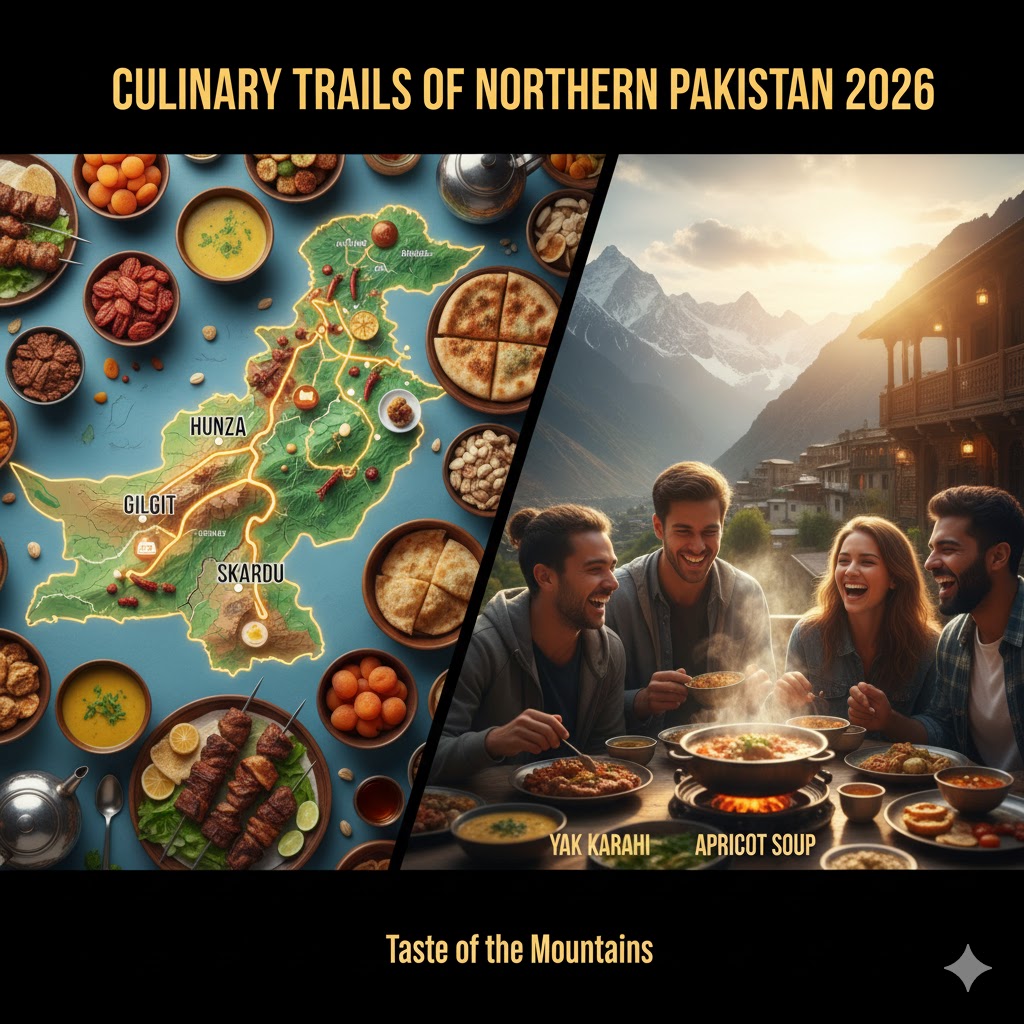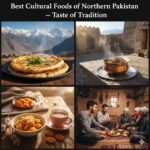Introduction: Mapping the Flavors of the North
Northern Pakistan is not only a land of breathtaking glaciers and lush meadows — it’s a region where flavor and geography meet in perfect harmony. The Culinary Trails Map Northern Pakistan (2026 Edition) charts the way to the region’s most authentic food experiences, tracing the taste buds along ancient Silk Route valleys, alpine kitchens, and hidden village feasts.
From Hunza’s organic apricot orchards to Baltistan’s aromatic butter tea, every region offers its own identity through food. In 2026, culinary tourism is expanding — thanks to community-run kitchens, farm stays, and food festivals promoting local traditions.
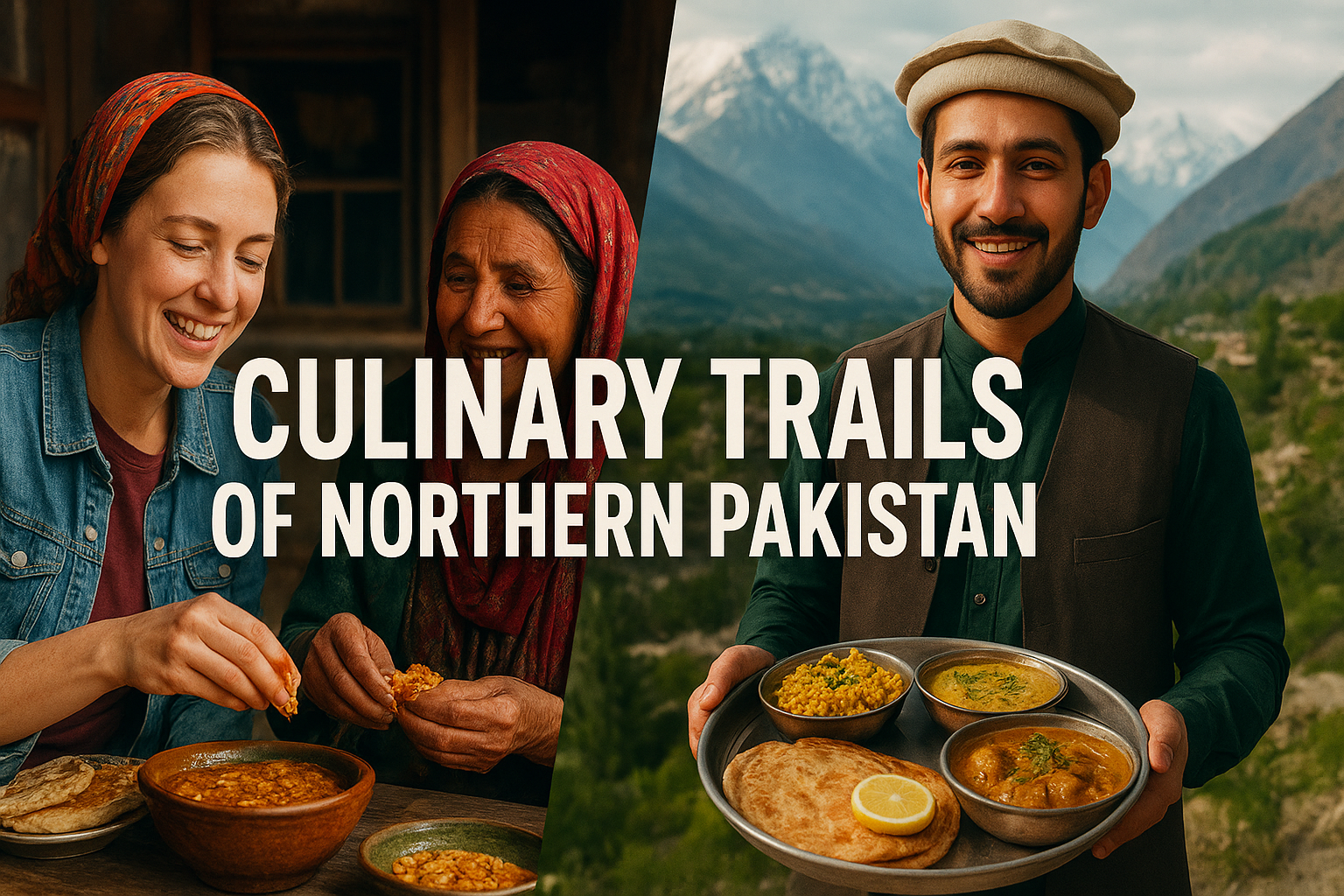
This culinary journey invites travelers, food photographers, and vloggers to experience Pakistan’s northern kitchens as living museums of taste — where stories are served in every bowl.
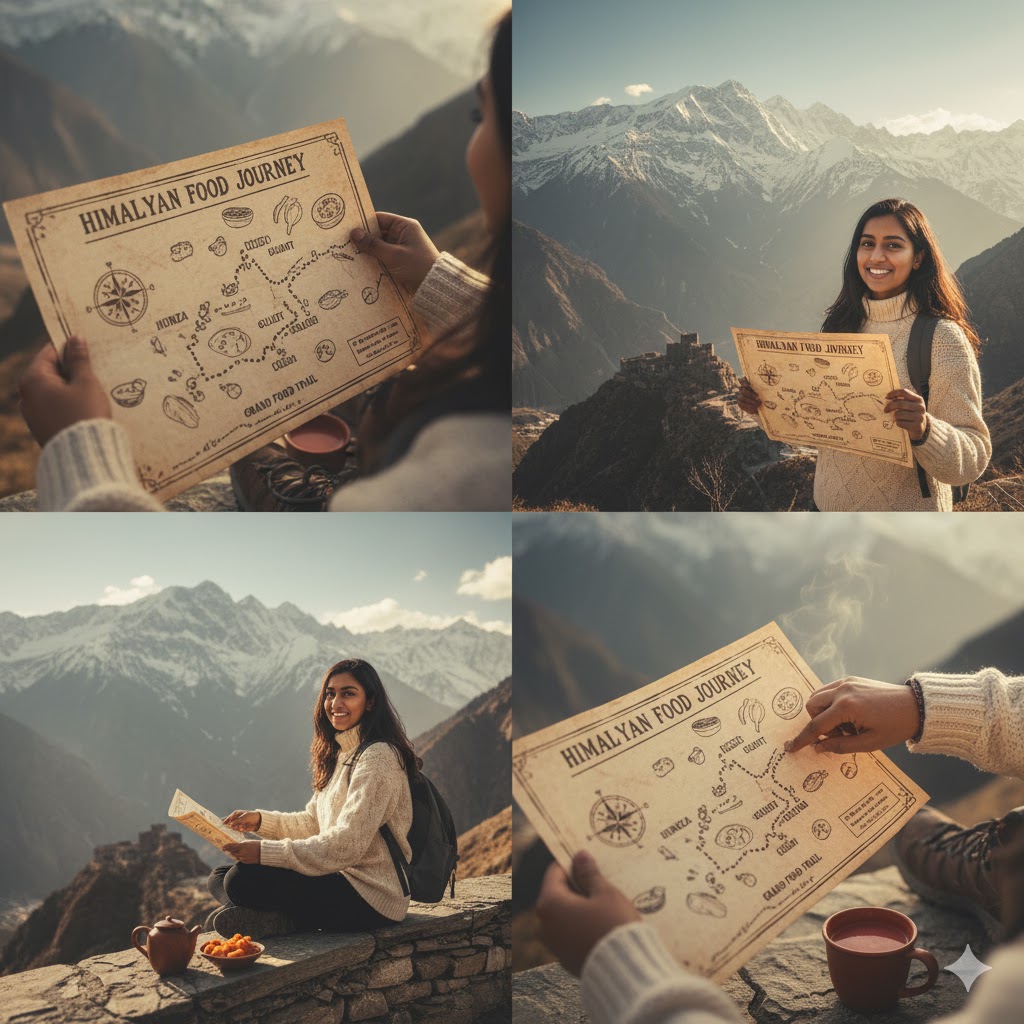
The Three Legendary Culinary Routes
1. The Hunza Heritage Food Trail
The Hunza Valley is where ancient wisdom meets healthy eating. On this trail, travelers can explore the Hunza bread-making villages, try walnut kebabs, and sip herbal Tumoro Chai while overlooking the Hunza River.
- Hidden Gems: Visit Altit Fort’s heritage kitchen — an operational 700-year-old wood oven where locals still bake Phitti.
- Tradition: The Hunza diet is considered among the world’s healthiest — minimal oil, local grains, and mountain herbs.
- Ticket Info: Entry to Altit & Baltit Fort kitchens approx. PKR 500–800 (2026 rates).
- Local Tip: Visit during Apricot Blossom Festival (April) for farm-to-table food fairs.
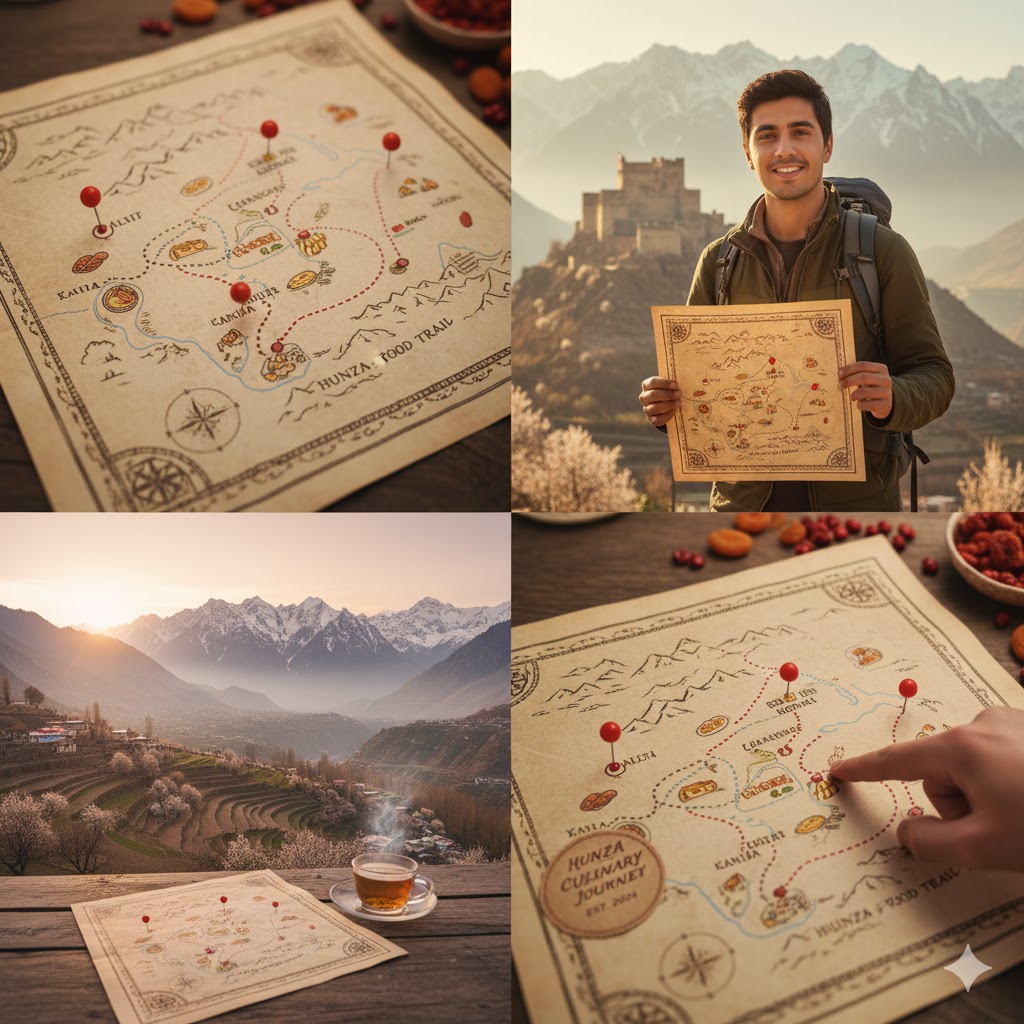
📍Source: Learn about Hunza’s organic farming movement at UNESCO’s World Heritage Food Initiative
🔗Must See: Continue your journey from Hunza through the Best Cultural Foods of Northern Pakistan — Taste of Tradition for full recipes and local stories.
2. The Skardu–Khaplu Flavor Corridor
This route unfolds through Skardu, Shigar, and Khaplu, known for bold flavors shaped by altitude and trade. Signature dishes include Balti Gosht, Chapshuro, and the pink Noon Chai — each symbolizing survival in mountain life.
- Hidden Gems: Dine at Shigar Fort’s heritage restaurant, serving age-old Balti dishes in copper pots.
- Tradition: Meals here are communal — cooked in copper “degs” for weddings or guests.
- Ticket Info: Shigar Fort dining entry around PKR 1200–1500, guided food tours available.
- Local Tip: Pair your visit with local apricot oil tasting sessions in Khaplu village homes.
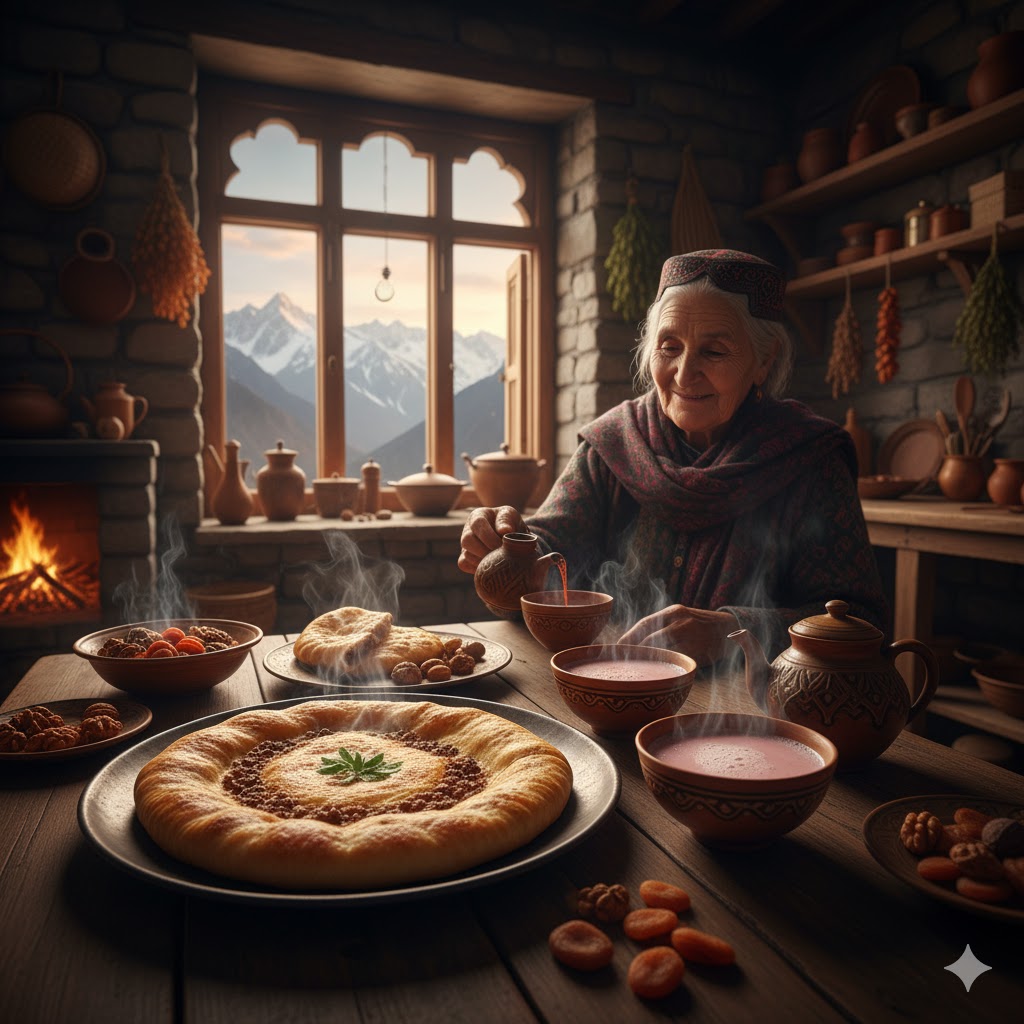
📍Source: Visit Pakistan Adventure Tourism Portal for Skardu food festivals 2026.
Must See: Add to your travel route — Historic Forts in Pakistan includes insights on dining at fort courtyards.
3. The Gilgit–Ghizer Valley Farm Trail
Gilgit’s valleys are home to timeless recipes — Dowdo Soup, Balay, and herbal honey desserts. This trail highlights the connection between agriculture, spirituality, and food.
- Hidden Gems: Ghizer’s hidden cafés serve Dowdo made with yak milk and wild greens.
- Tradition: Locals preserve vegetables underground for winter use — a practice passed down through generations.
- Ticket Info: Farm experience tours from PKR 1000 per person (includes lunch).
- Local Tip: Visit Ghizer in October for harvest-season food festivals.
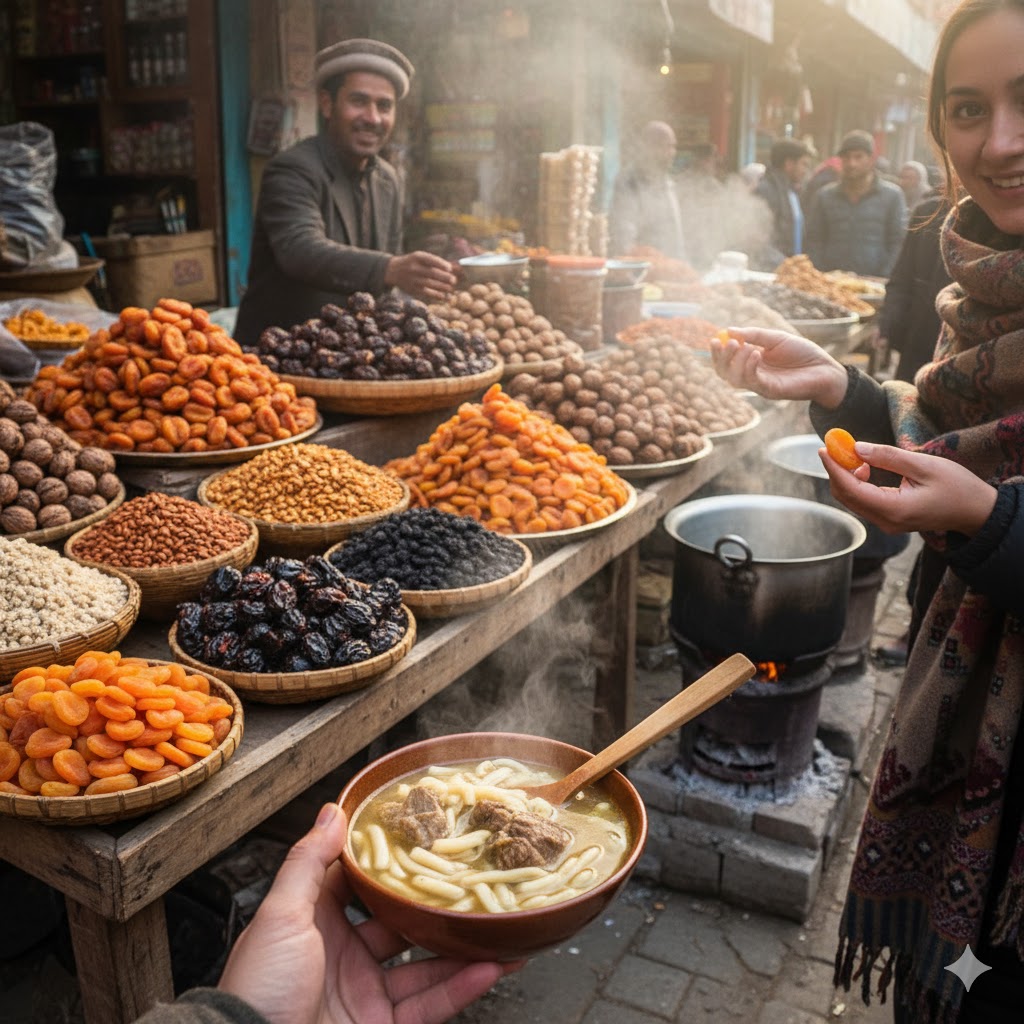
Regional Flavor Routes: Culinary Heritage by Province (2026 Edition)
Each region of Northern Pakistan tells a different story through food — a mix of Silk Route influence, mountain survival, and the slow art of communal cooking. The Culinary Trails Map 2026 is divided into distinct flavor regions, each offering a one-of-a-kind journey across altitude, climate, and tradition.
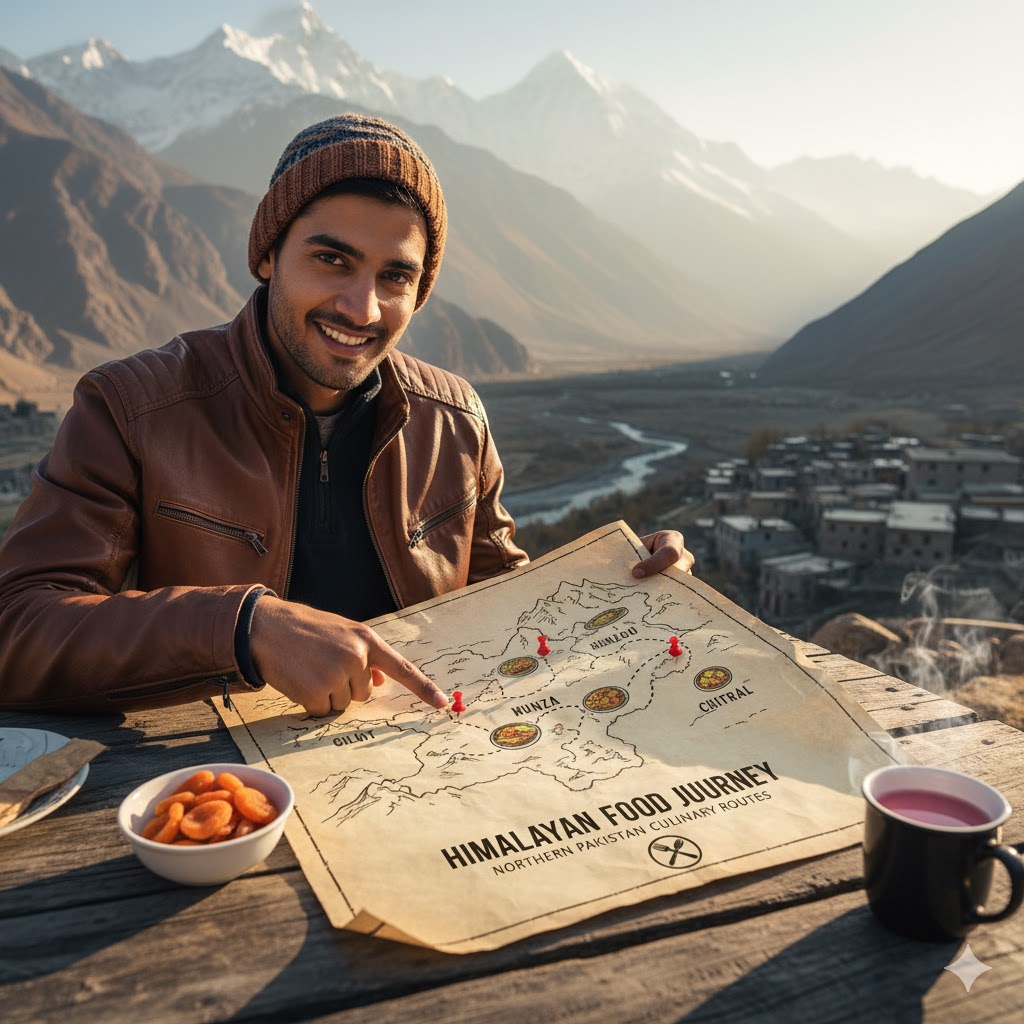
🍯 1. Gilgit-Baltistan — The Kingdom of Apricots and Herbal Wisdom
The culinary story of Gilgit-Baltistan begins with apricots — called “gold of the north.” Here, food is simple yet deeply nourishing, focused on balance and longevity.
- Signature Dishes:
- Dowdo Soup: A warming barley noodle soup infused with yak milk and herbs.
- Chapshuro: A stuffed meat pie, often compared to a Himalayan calzone.
- Butter Tea (Noon Chai): Made with salt, butter, and milk — a survival drink in freezing winters.
- Tradition: Families dry fruits on rooftops during late summer, creating a year-round source of natural energy. Meals are often shared in wooden bowls as a symbol of unity.
- Hidden Gems: Try the organic kitchen in Karimabad’s Baltit Heritage Inn, where elderly women demonstrate ancient butter-churning techniques.
- Ticket Info: Guided food tours in Gilgit start around PKR 2500 (includes tea tasting, honey farms, and heritage lunch).
- Local Tip: Avoid packaged snacks — instead, try local walnut snacks and sun-dried apples from Ghizer stalls.
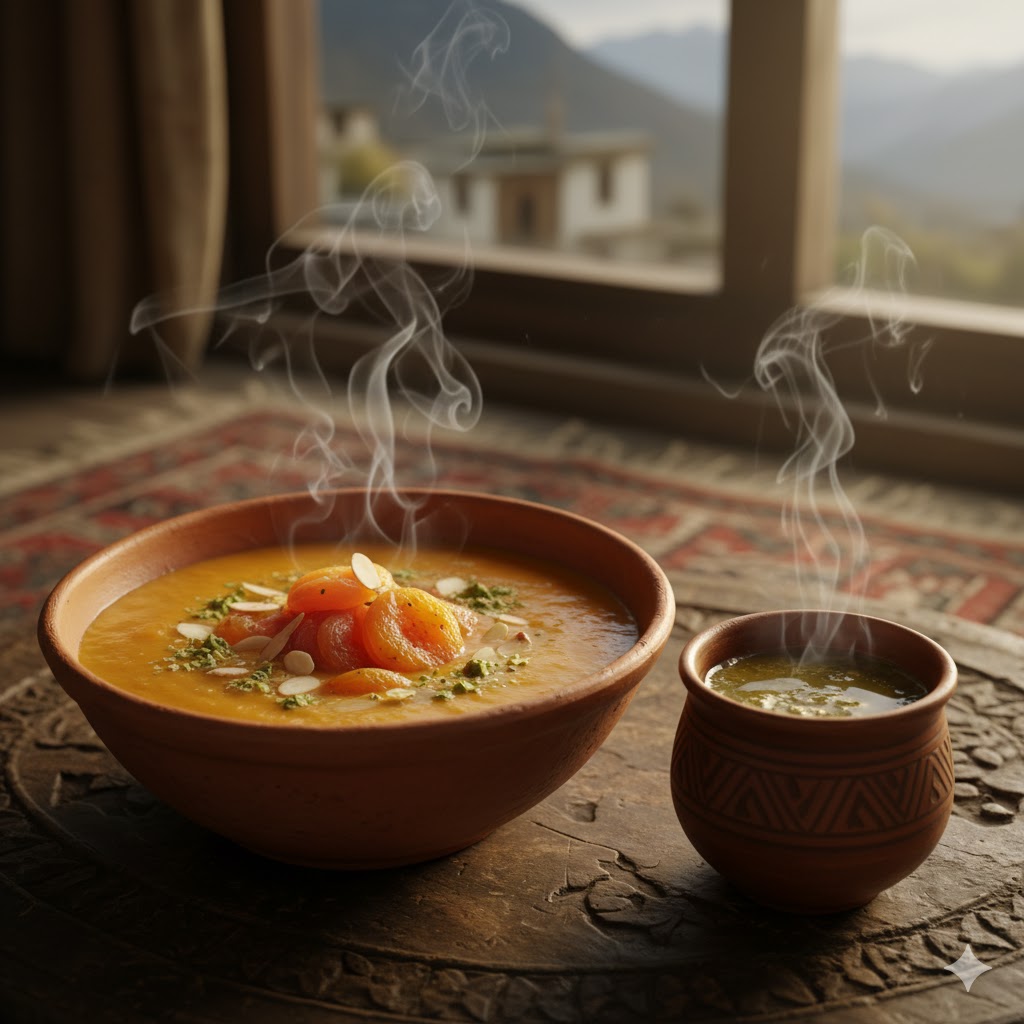
🥟 2. Hunza Valley — Longevity Through Organic Living
In the heart of the Karakoram, Hunza offers the most health-conscious cuisine in South Asia. The locals are known for their long life expectancy — attributed to their plant-based, low-fat diets and glacial water.
- Signature Dishes:
- Phitti Bread: A slow-baked wheat bread cooked in clay ovens.
- Gyal: Buckwheat pancakes with apricot oil.
- Harissa: A hearty winter porridge with meat and lentils.
- Tradition: Meals begin with a prayer of gratitude for “land and life.” Cooking remains communal — men often gather wood while women knead dough in courtyards.
- Hidden Gems: Visit the Altit Fort Women’s Kitchen, part of the Aga Khan Trust for Culture, offering cultural dining experiences.
- Ticket Info: Entry to Altit & Baltit Heritage Kitchens PKR 800, includes tasting of 3–4 dishes.
- Local Tip: Plan your visit during Apricot Blossom Festival (March–April) when Hunza turns pink and hosts open-air food stalls.
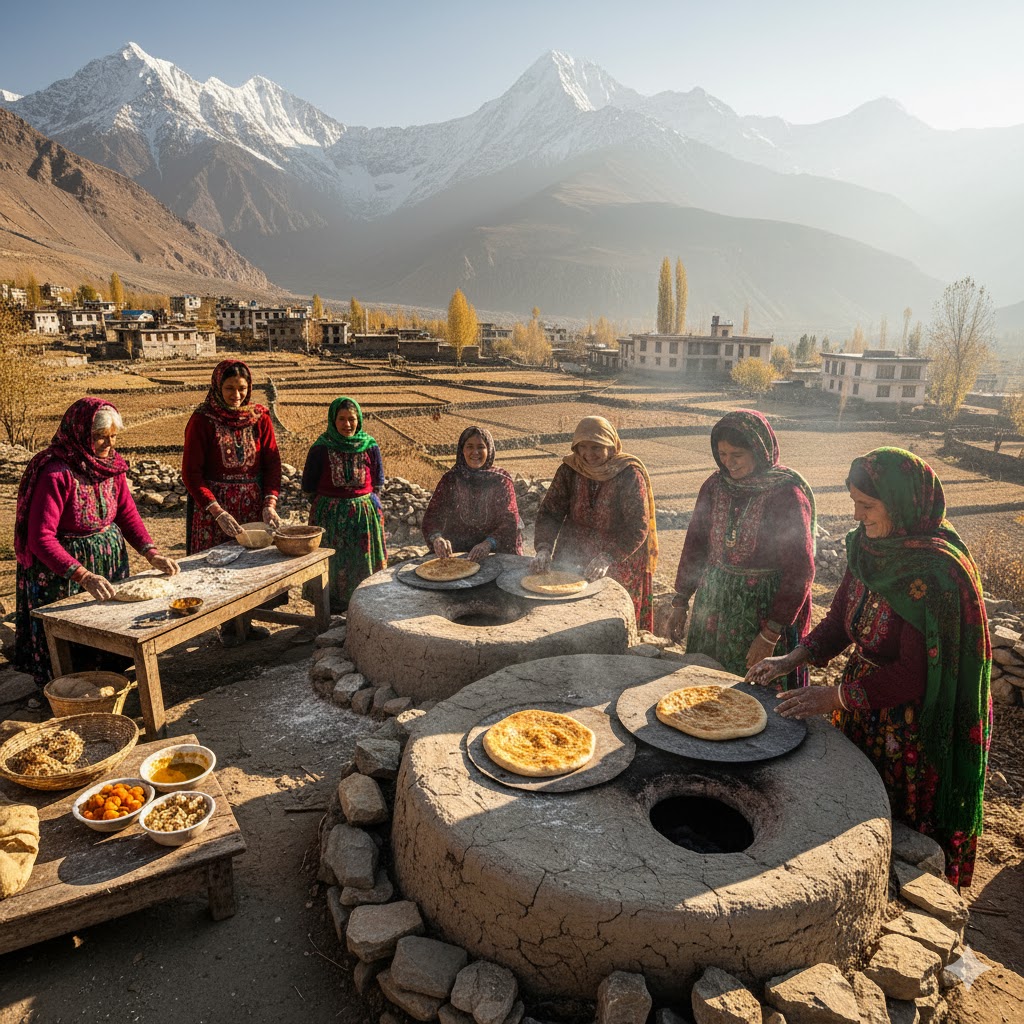
🍲 3. Skardu & Shigar — High-Altitude Kitchens of Flavor
Skardu’s cuisine mirrors its landscape — rugged, pure, and hearty. Food here is meant to survive cold and high altitudes, blending Balti, Tibetan, and Kashmiri influences.
- Signature Dishes:
- Balti Gosht: A rich stew made in copper pots with Himalayan herbs.
- Mamtu: Steamed dumplings filled with spiced meat and vegetables.
- Khambir Bread: A round flatbread often served with apricot oil and honey.
- Tradition: Locals celebrate “Mehmaan Nawazi” (hospitality) — guests are always served tea and bread first, no matter the time of day.
- Hidden Gems: The Serena Shigar Fort Café offers farm-to-table Balti dishes prepared by local chefs trained in heritage cooking.
- Ticket Info: Food tour + Fort visit PKR 1500–2000 (2026 rate, includes lunch & fort entry).
- Local Tip: Visit during Shandoor Polo Festival (July) when food stalls serve Balti and Chitrali delicacies under colorful tents.
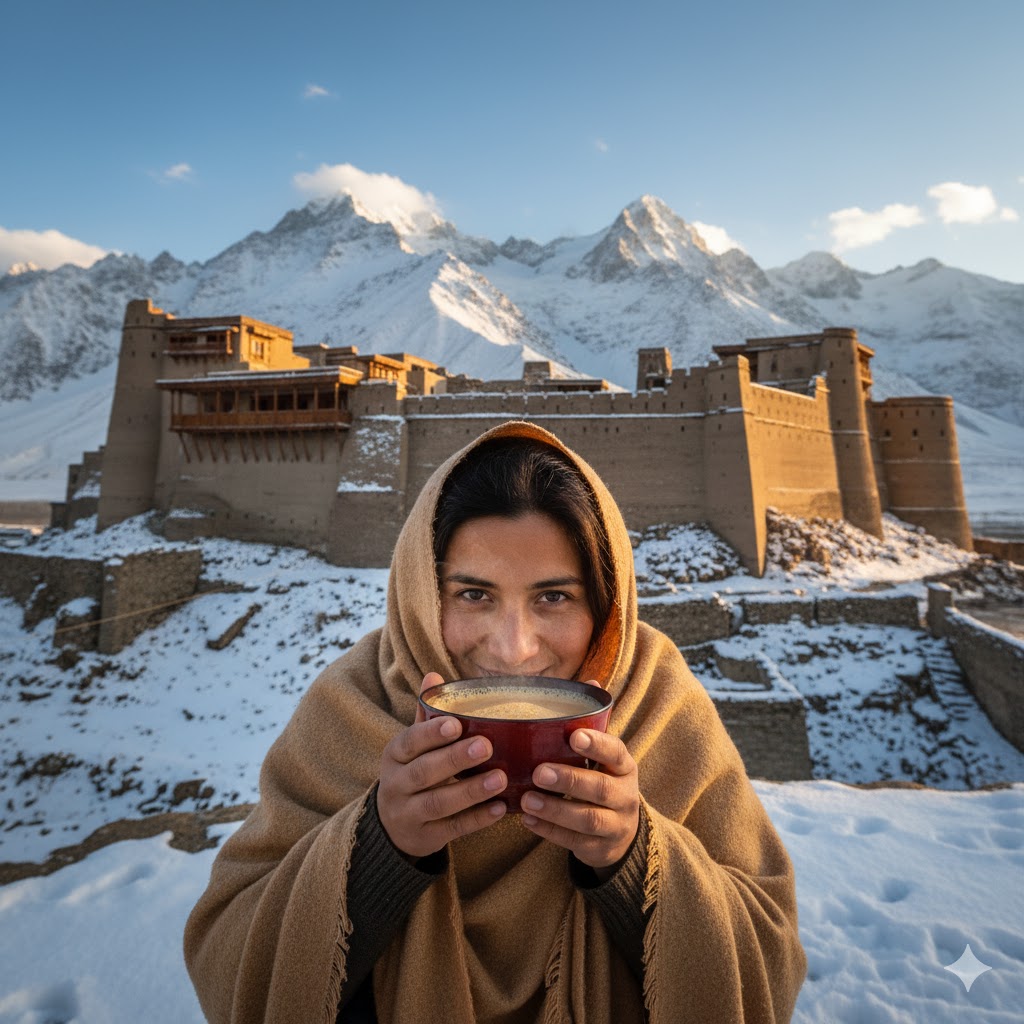
🌾 4. Chitral & Kalash Valleys — The Spirit of Ancient Food
In the mystical valleys of Chitral and Kalash, food is infused with rituals, harvest celebrations, and spiritual gratitude. The region blends Afghan, Persian, and Dardic food heritage.
- Signature Dishes:
- Cheer Aash: Yogurt soup with herbs and rice.
- Khumakh Bread: Flaky pastry bread often served with goat cheese.
- Mulberry Wine: Locally fermented drink during the Joshi festival.
- Tradition: Food is blessed during Joshi Festival as a gift from nature — women bake symbolic breads to celebrate fertility and spring.
- Hidden Gems: Try the Bumburet Valley Kitchen Café, a women-run community kitchen serving heritage Kalash dishes.
- Ticket Info: Cultural food tours around PKR 1800–2500, including meal and local guide.
- Local Tip: Always bring a reusable container — locals love gifting you leftover bread or sweets for your onward trek!
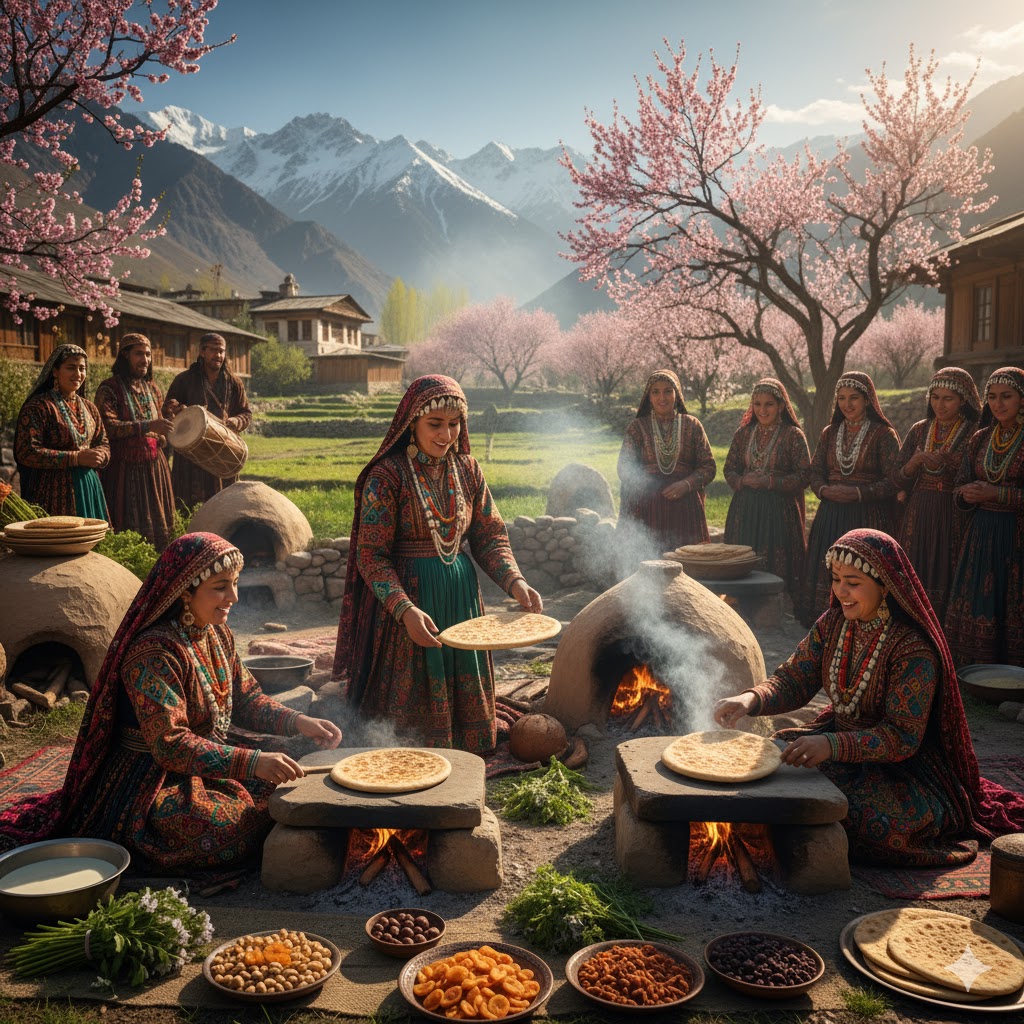
Culinary Trail Routes, Seasonal Food Maps & Backpacking Guide (2026 Edition)
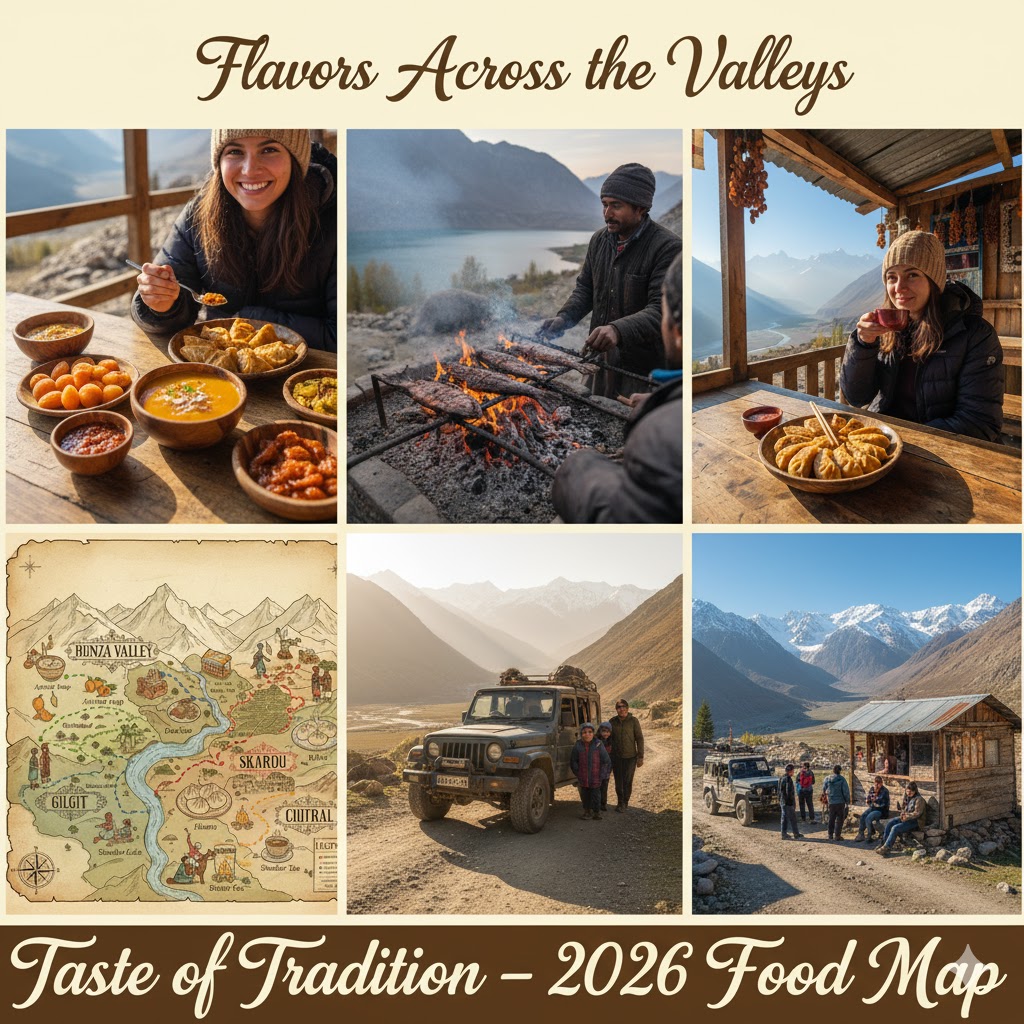
🧭 Mapping the Culinary Trails — Routes Through Taste and Altitude
Northern Pakistan’s geography defines its cuisine. From the apricot orchards of Hunza to the yak-butter kitchens of Skardu, every valley tells a story of resilience and hospitality.
If you’re planning a culinary road trip in 2026, here’s how your trail unfolds:
- Route 1 — Hunza–Gilgit–Skardu
Start in Hunza with fresh Phitti bread, then move toward Gilgit for Chapshuro lunches, ending in Skardu with Balti Gosht cooked in copper pots.
The road along the Karakoram Highway (KKH) is dotted with roadside teahouses serving butter tea and barley cakes — a ritual stop for travelers since Silk Route times. - Route 2 — Chitral–Kalash Valleys
This is where food meets spirituality. The spring festivals (Joshi and Uchal) bring dishes made of goat cheese, wine, and wild herbs — an ancient tradition that continues to this day. - Route 3 — Naran–Fairy Meadows–Rama Lake
These routes are less about local kitchens and more about campfire cooking — backpackers experiment with desi noodles, trout fish, and roasted corn, creating a fusion of comfort and culture.
Each of these routes connects not only landscapes but generations — from tribal kitchens to modern cafés that now promote farm-to-table travel dining.
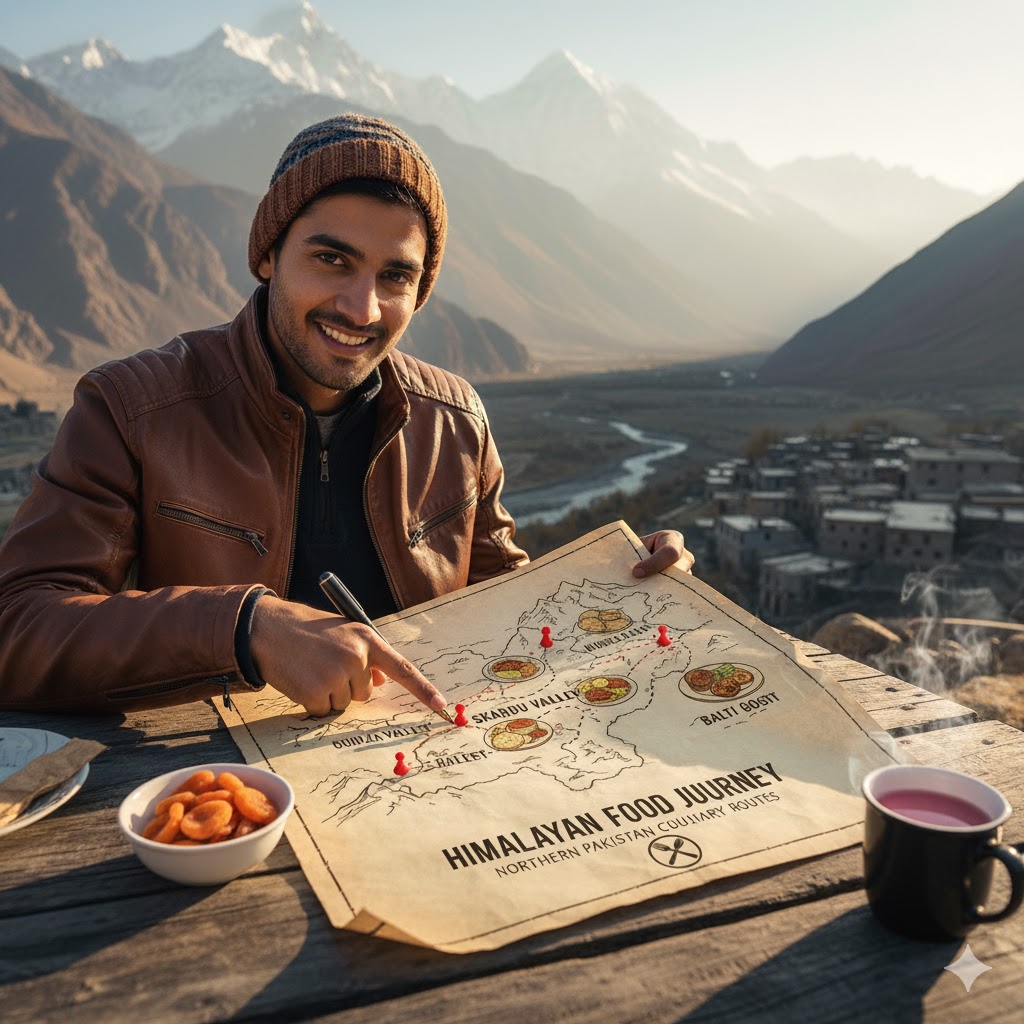
🥾 Backpacker’s Food Survival Guide — Eat Local, Stay Light
The beauty of traveling through Northern Pakistan lies in its simplicity — you don’t need expensive restaurants to experience great food. Street vendors, guesthouses, and family kitchens offer the real taste of the north.
What to Try as a Backpacker:
- Hunza Walnut Cake: Sold in local cafés along Karimabad Bazaar.
- Balti Dumplings (Mamtu): Great for treks — filling and light.
- Yak Milk Tea: Found at small roadside huts along Shigar Valley.
- Dry Apricots & Mulberries: The ultimate trekking snack.
Local Tip: Always carry a reusable flask; locals are happy to refill it with Noon Chai or spring water. Avoid bottled water where possible.
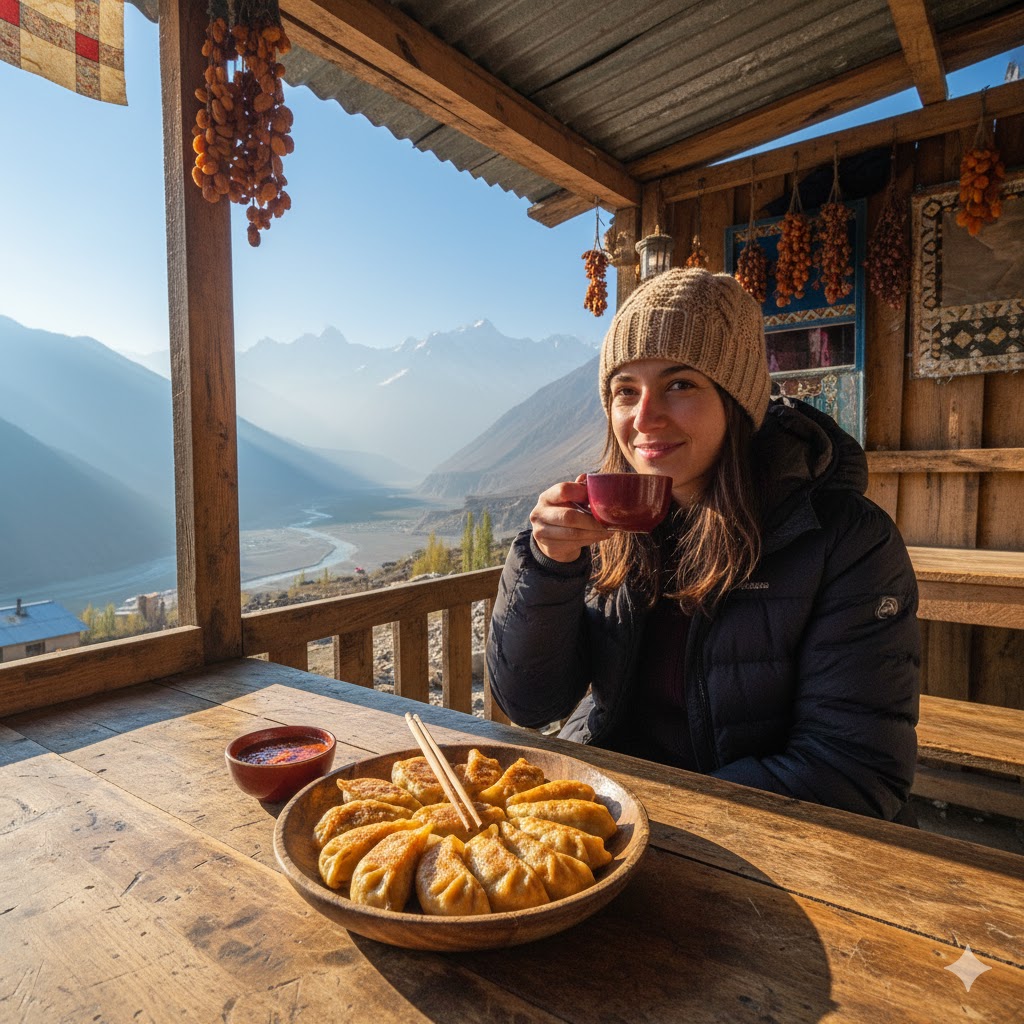
Source: Backpacker Travel Pakistan 2026 – Responsible Routes
Must See: Continue your trek to Best Camping Spots in Northern Pakistan (2026).
🗓️ Seasonal Culinary Events — Where Taste Meets Tradition
Northern Pakistan celebrates food with festivals rooted in agriculture and gratitude. Each season carries a story:
1. Cherry Blossom Food Fair (Hunza, March–April)
The valley blooms in pink and white, and local cafés create menus inspired by blossoms — cherry desserts, apricot smoothies, and honey cakes.
Hidden Gem: Visit Altit Women’s Social Café for handmade “phitti bread” stuffed with cherries.
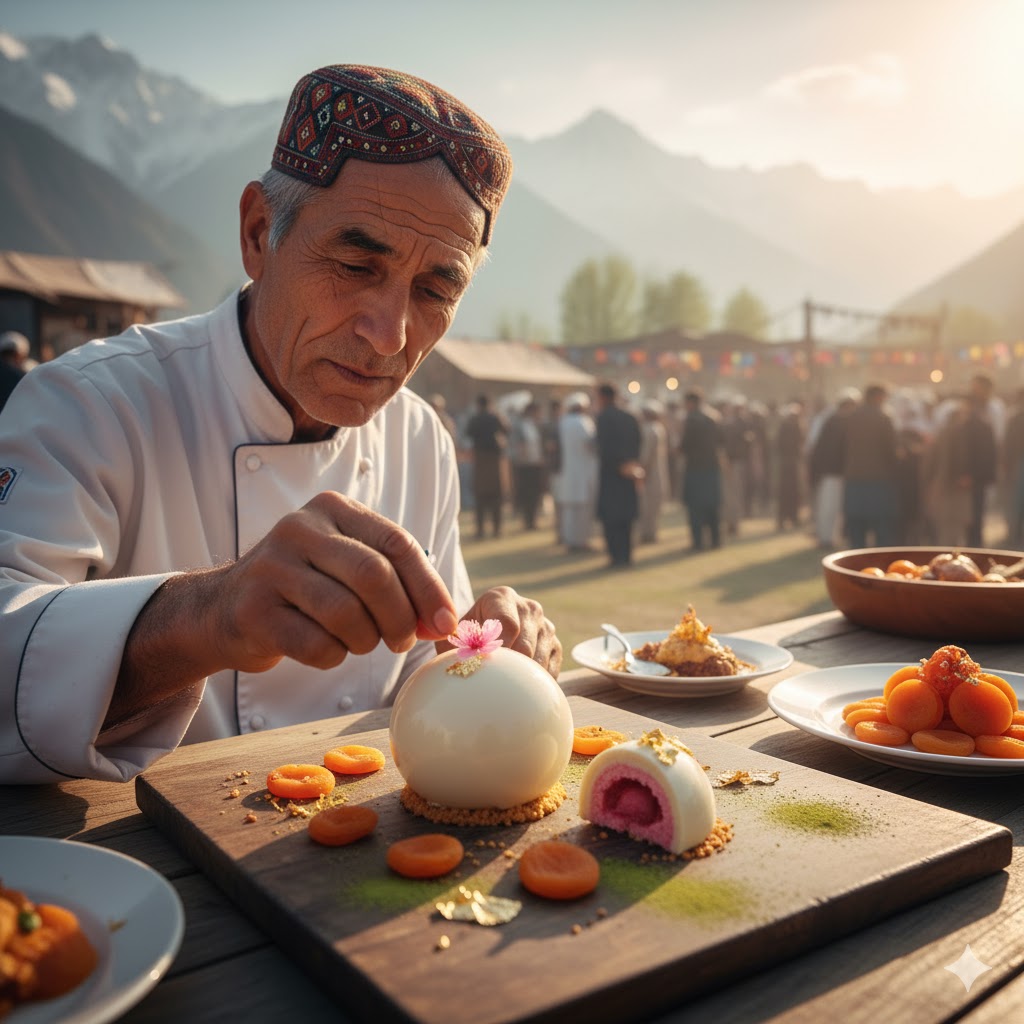
2. Shandoor Polo & Food Festival (July)
Beyond the game, Shandoor becomes a culinary bazaar — Balti, Chitrali, and Gilgit kitchens serve their best. Khambir bread with yak butter is a must-try while watching polo under the high-altitude sun.
Local Tip: Arrive early to taste fresh trout grilled on Himalayan salt stones.
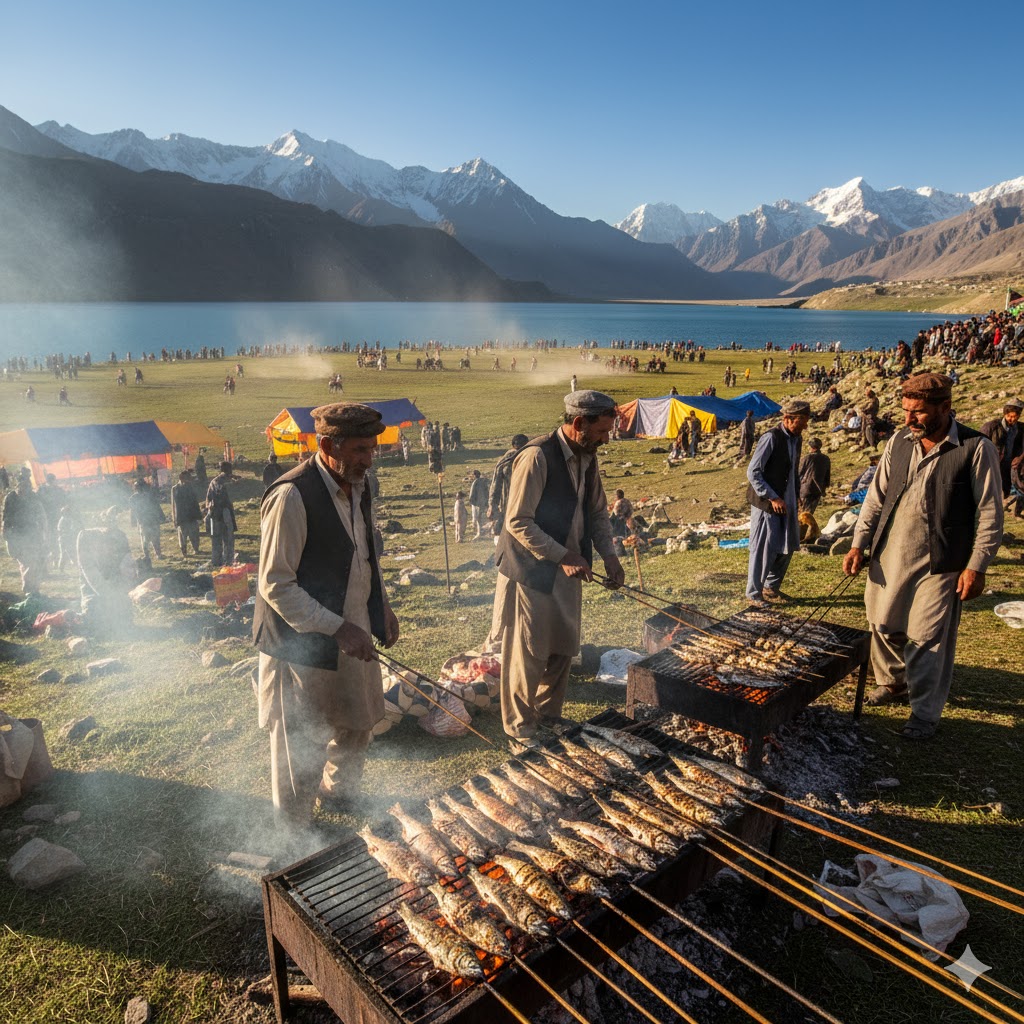
Source: Pakistan Tourism Development Corporation – Shandoor Polo Festival
Must See: Related article — Top Tourist Events to Attend in Pakistan 2026.
3. Apricot Harvest Week (Skardu, August)
This harvest marks the heart of Balti culture — families dry apricots, crush their kernels for oil, and prepare herbal teas for winter. Visitors can join drying workshops and community meals.
Ticket Info: Entry free for guests of registered eco-lodges; donation encouraged for local women’s cooperatives.
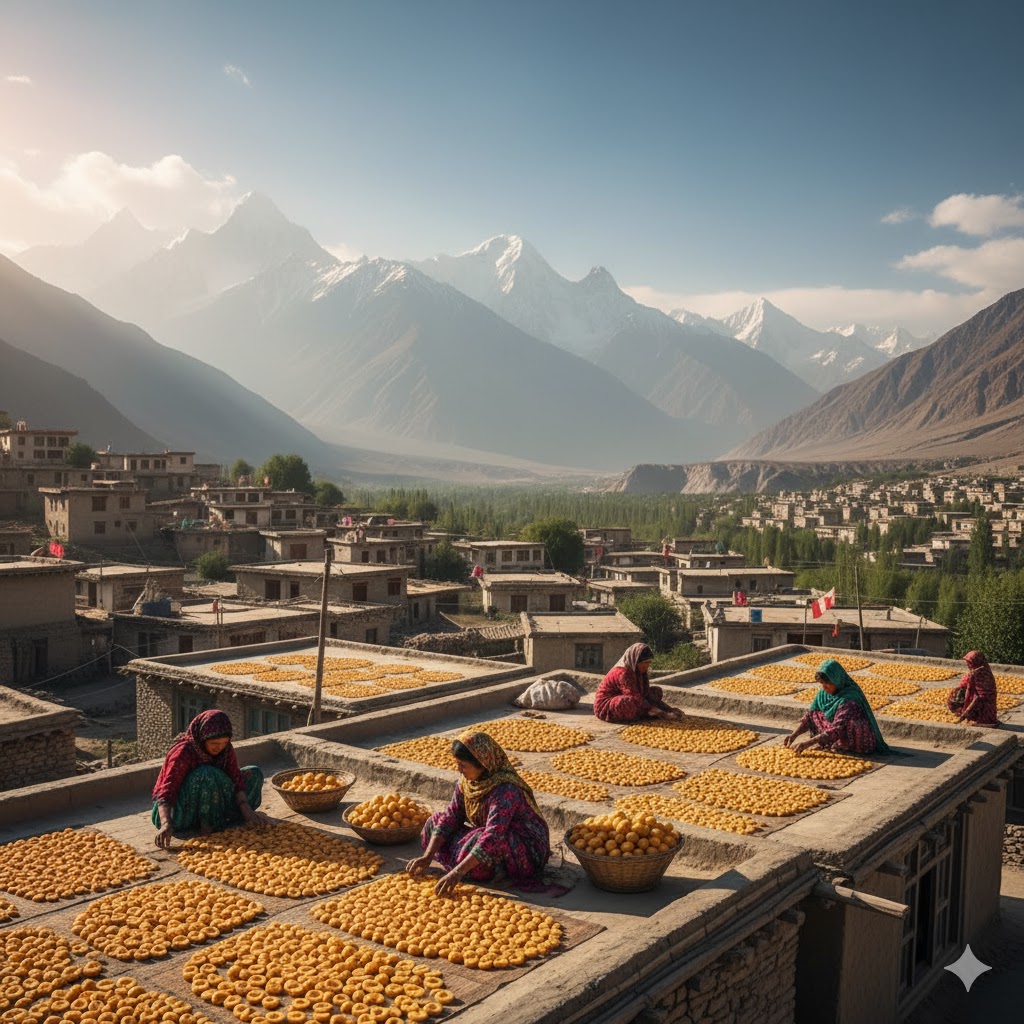
4. Winter Tea Gathering (Hunza & Passu, December–February)
Snow brings quiet, and locals gather around clay stoves for butter tea and dowdo soup. This is less a festival, more a ritual of endurance and warmth.
Hidden Gem: Try the tea house in Passu Village, where elders share folklore about “snow spirits” over tea.
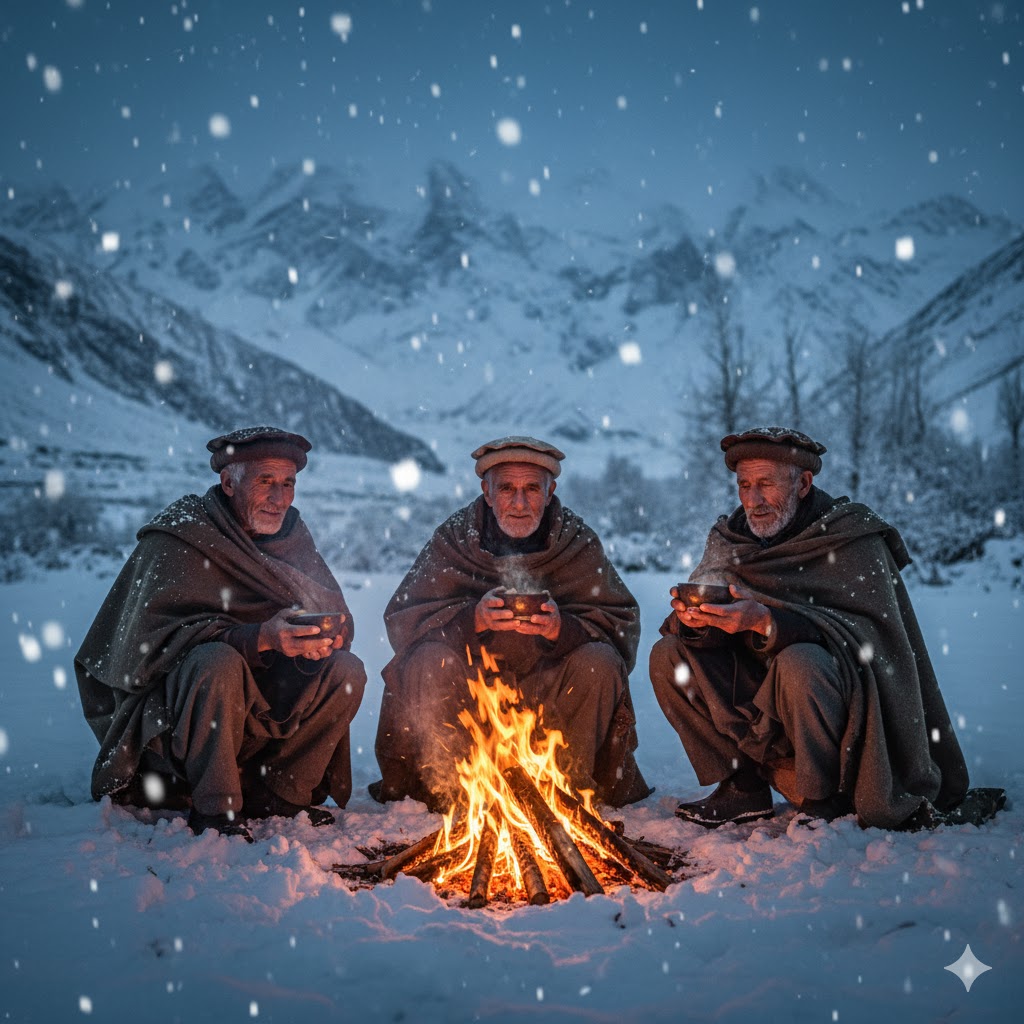
🌿 Farm-to-Table Tourism — The Rise of Sustainable Food Travel
Northern Pakistan is becoming a model for eco-food tourism. In Hunza and Ghizer, travelers can now book stays at farms producing their own honey, apricot oil, or herbal tea.
- Homestays: Offer organic breakfasts with local yogurt, handmade jams, and chapatis.
- Workshops: Teach apricot drying, bread baking, or cheese making.
- Culinary Trails: Run by local NGOs to support women farmers and mountain kitchens.
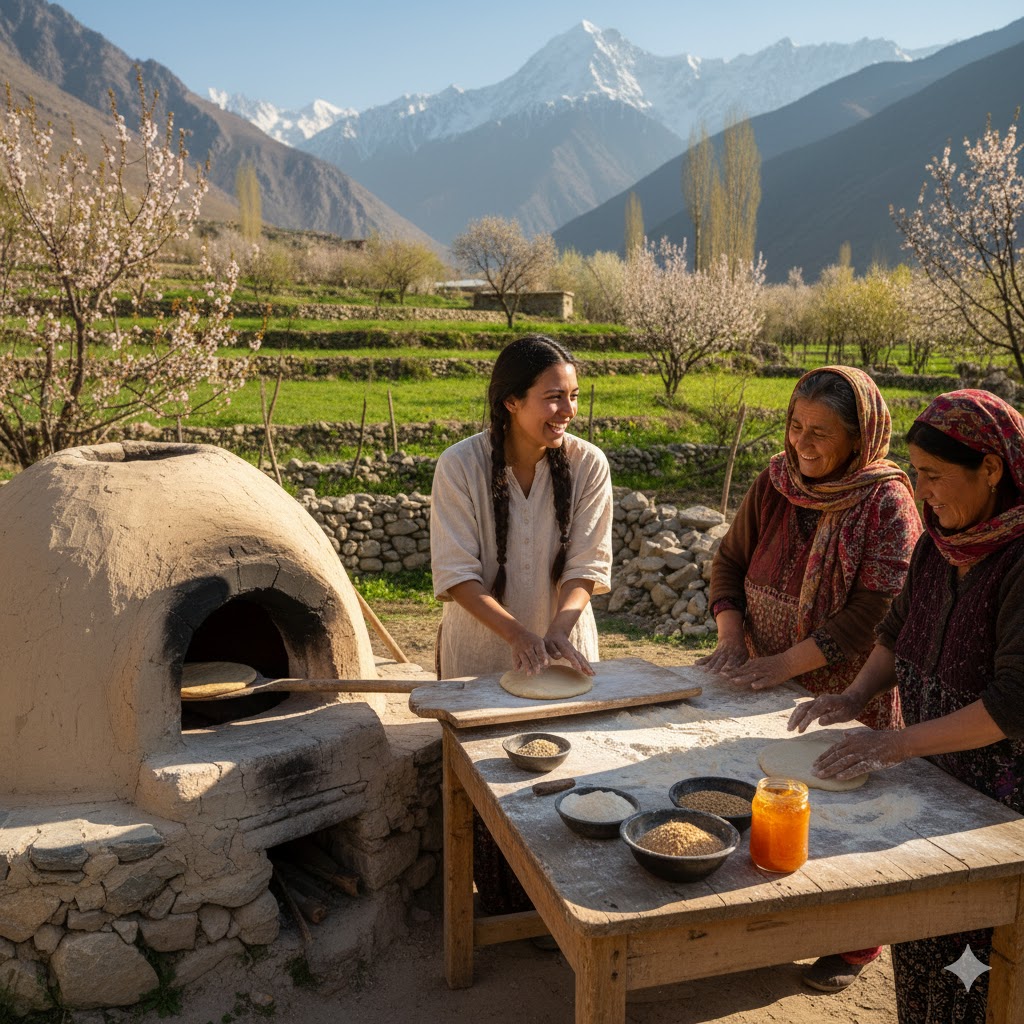
🧂 Hidden Culinary Villages — Untouched by Time
- Nagar Valley: Known for almond milk and black salt dishes.
- Bagrot Village (Gilgit): Locals still use stone grinders for flour — join early-morning bread circles.
- Thalay Valley (Skardu): Offers a rare herbal soup called Chamurti, served with wooden ladles.
- Yasin Valley: Try mountain trout cooked in apricot oil — a secret known only to villagers.
These hidden kitchens keep Pakistan’s culinary memory alive — far from hotels, powered by wood, love, and ancestral recipes.
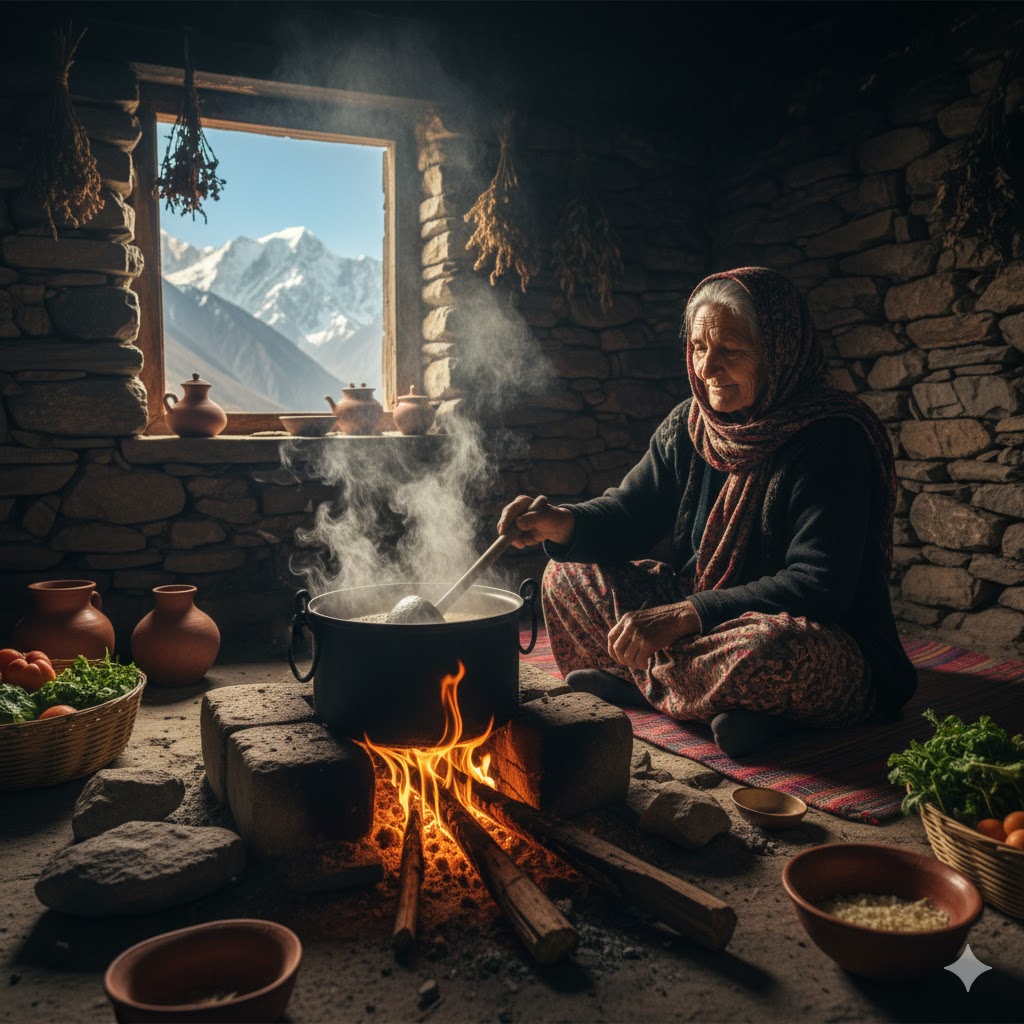
🚗 Traveler’s Route Overview (Culinary Map 2026)
| Route | Duration | Major Stops | Signature Dishes | Best Season |
|---|---|---|---|---|
| Hunza–Gilgit–Skardu | 8–10 Days | Karimabad, Gilgit City, Shigar | Phitti Bread, Balti Gosht | April–October |
| Chitral–Kalash | 5–7 Days | Bumburet, Rumbur | Cheer Aash, Goat Cheese Bread | May–August |
| Naran–Rama Lake | 3–5 Days | Naran, Astore | Fresh Trout, Honey Tea | June–September |
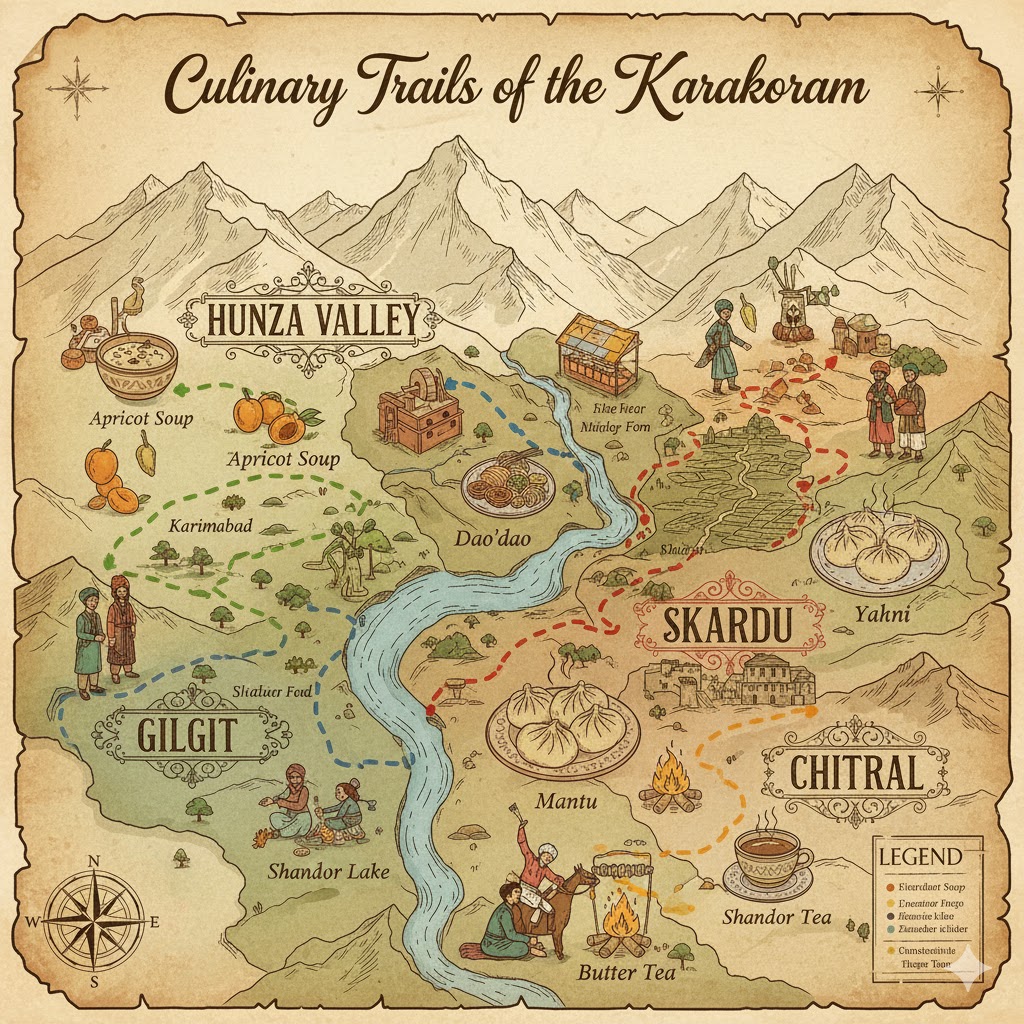
💬 Traveler Testimony: Food That Heals the Soul
“Eating butter tea at 10,000 feet while hearing the echo of prayers in Skardu — that’s when I understood food isn’t just fuel, it’s faith.”
— Aiman Shah, Food Blogger, 2026 Culinary Trail Explorer
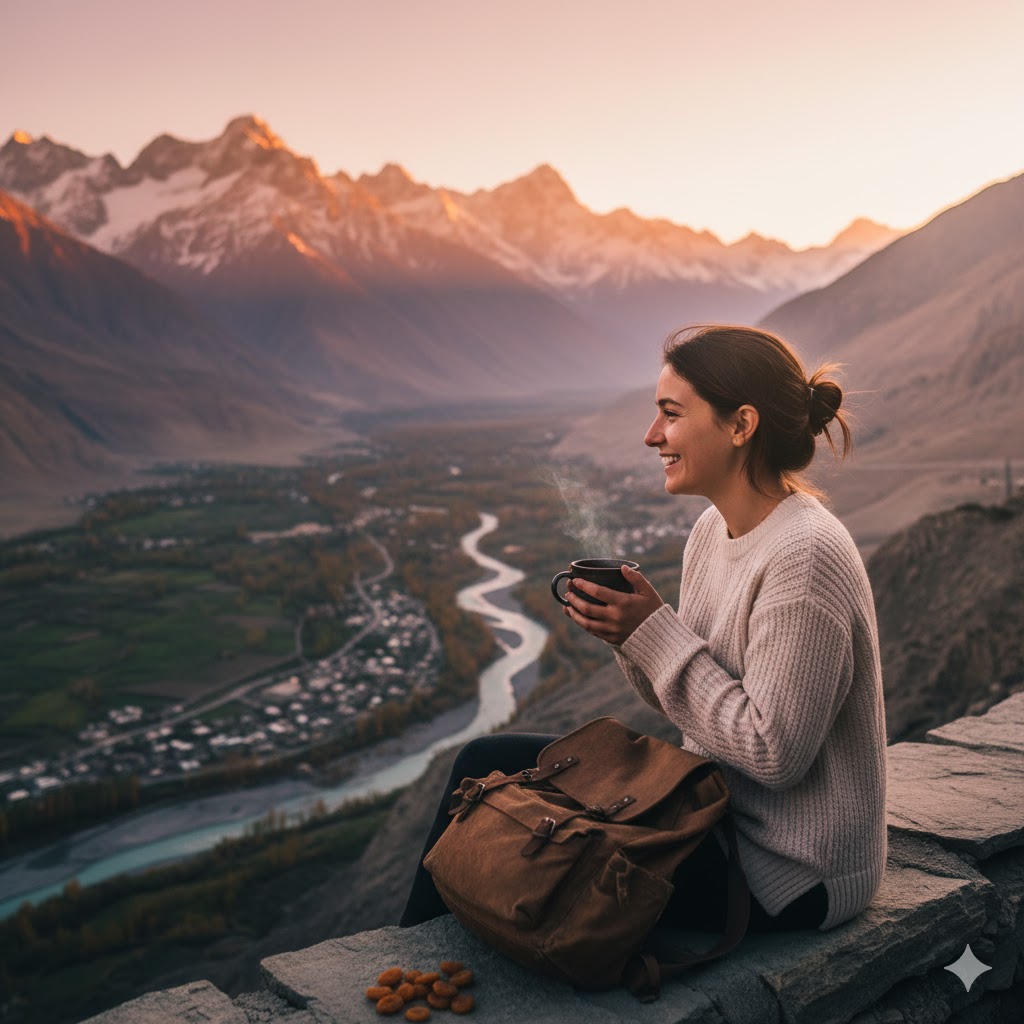
Traveler Guide — Northern Pakistan’s Culinary Future
The Culinary Trails of Northern Pakistan (2026 Edition) aren’t just about dishes — they’re about identity. Each bite reflects endurance, purity, and respect for the mountains.
From the apricot-scented winds of Hunza to the smoky kitchens of Chitral, this region reminds us that true luxury lies in authenticity.
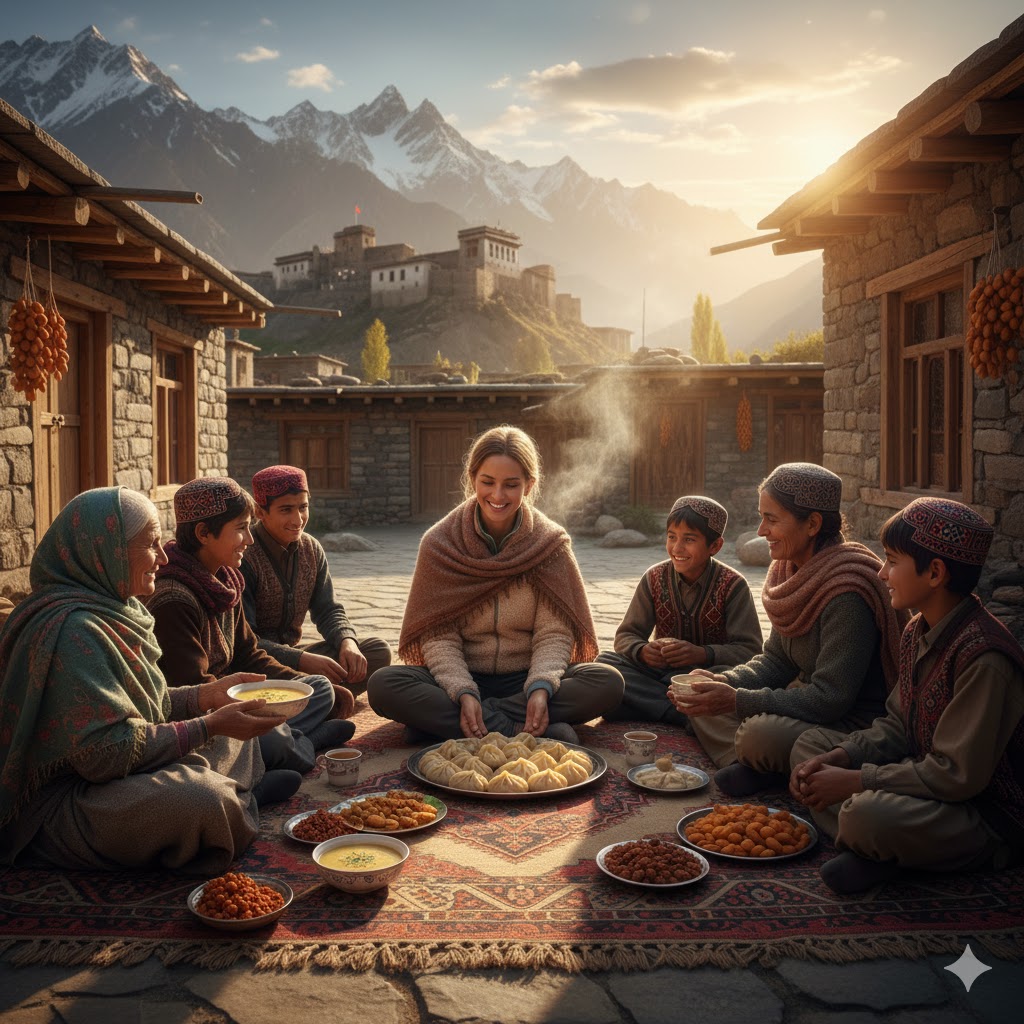
Taste, Memory & Timeless Recipes: The Soul of Northern Pakistan’s Culinary Trails
🕯️ Heritage Recipes — Passed Through Generations
Northern Pakistan’s cuisine has survived empires, invasions, and modernization — not through preservation in books but in memory. Every household recipe is an heirloom, passed from grandmothers to daughters, shaped by climate and love.
In Hunza, families still begin their mornings with Khambir bread made on open clay plates. In Gilgit, Phitti bread is toasted over apricot wood fires before being drizzled with yak butter. And in Skardu, Balti Gosht is slow-cooked in deep copper pans, its aroma carried through narrow streets at dusk.
These aren’t just meals; they are living archives of survival — born from harsh winters, mountain isolation, and deep gratitude.
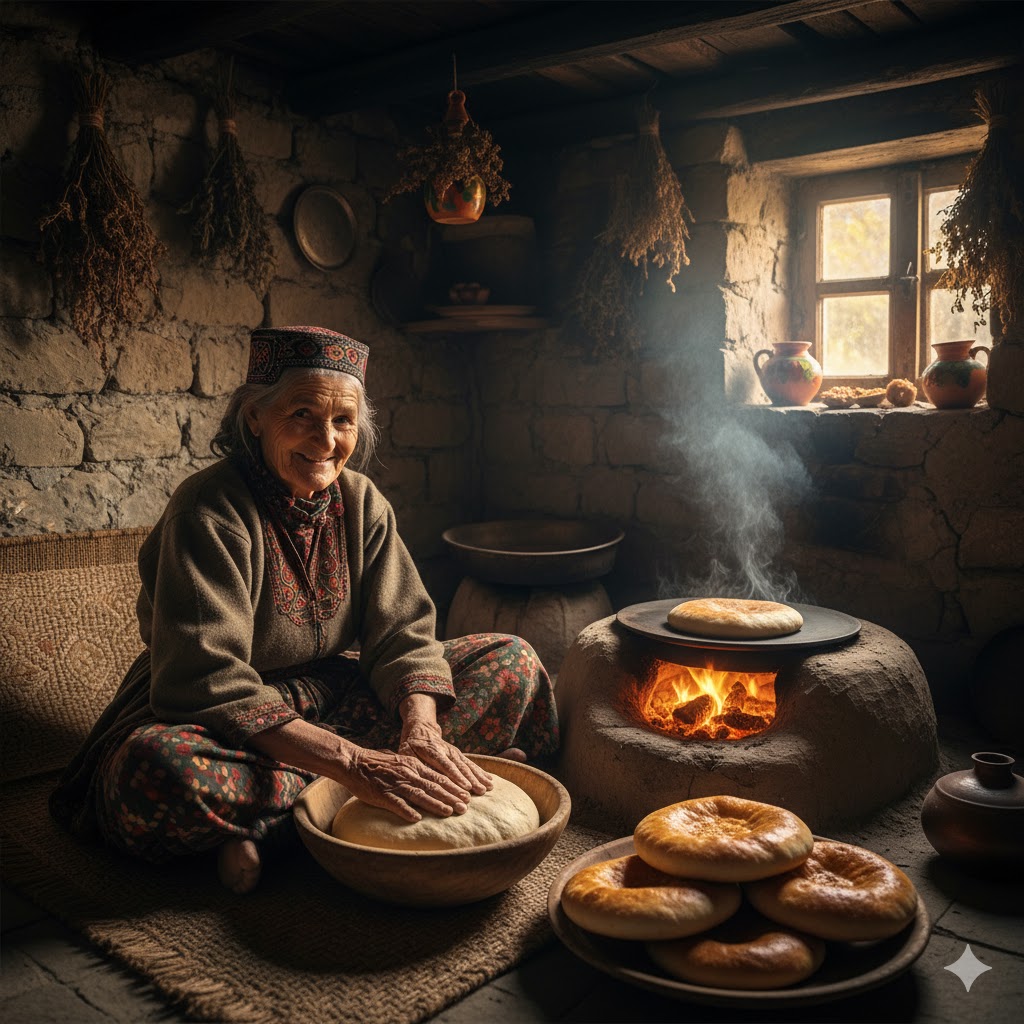
🌄 Morning to Midnight — Culinary Rhythm of a Day in the North
To understand the north, follow its meals through a day:
🌅 Morning: Butter tea, flatbread, local cheese.
🌞 Noon: Rice with apricot curry or Chapshuro (meat-stuffed bread).
🌆 Evening: Lentil soup, yak butter stew, herbal tea.
🌙 Night: Firelight storytelling and dried fruit desserts.
Travelers often describe the experience as “food poetry.” It’s not about variety — it’s about sincerity and warmth.
Local inns like those in Passu or Shigar Valley invite guests to cook side-by-side with families — sharing apricot oil secrets or learning the art of kneading soft bread in thin air.
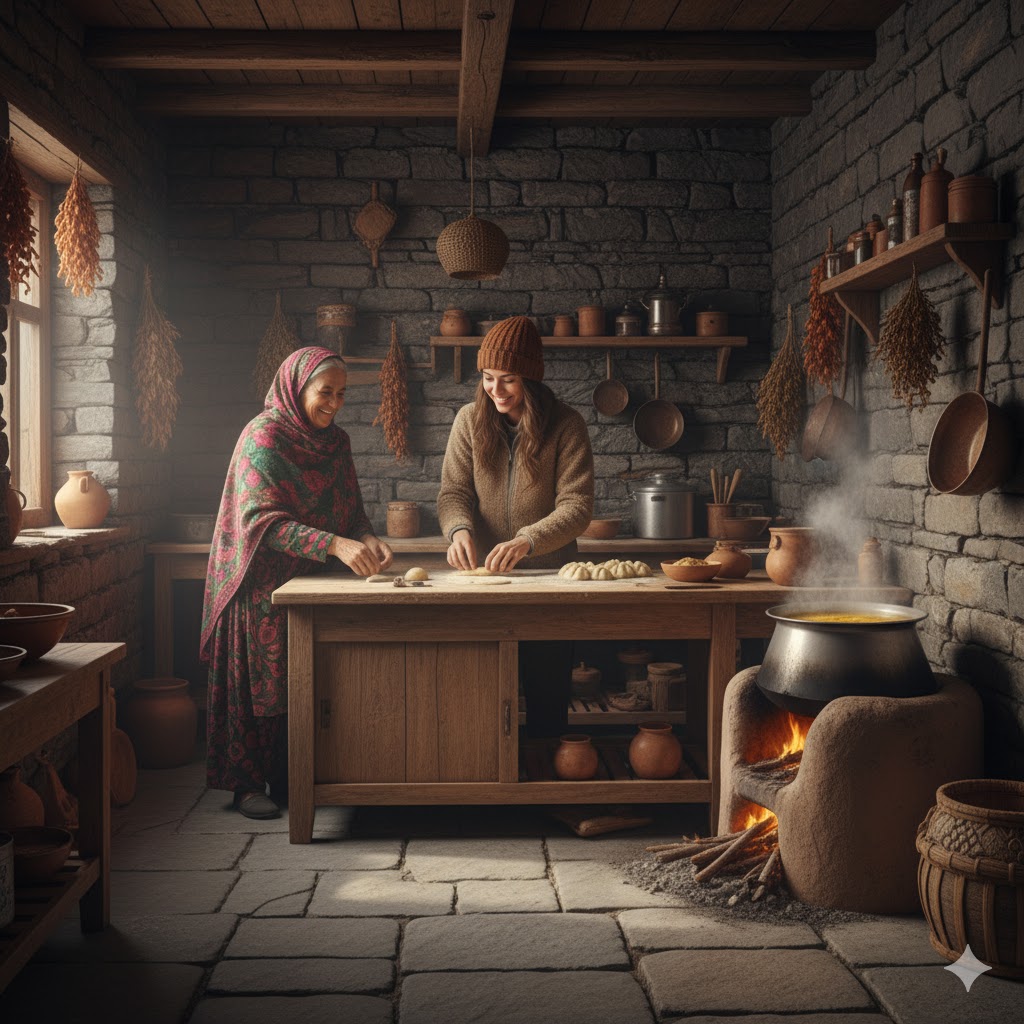
🧂 Signature Dishes You Must Taste (2026 Edition)
Each valley adds its own spice to the culinary landscape:
- Chapshuro (Gilgit-Baltistan): A baked bread stuffed with minced yak or mutton, onions, and herbs — often called the “mountain pizza.”
- Dowdo (Hunza): A creamy noodle soup served during winter; believed to strengthen immunity.
- Mamtu (Hunza & Yasin): Dumplings steamed over apricot wood — a blend of Central Asian and Chinese influence.
- Balay (Chitral): Wheat noodles cooked with yogurt and garlic; usually served during harvest festivals.
- Khamali (Ghizer): A thick bread eaten with local apricot jam for breakfast.
- Gyal (Skardu): A sweet pancake made with buckwheat flour and honey, served with mountain tea.
Every bite reveals geography — the use of yak milk in cold areas, apricot oil where trees bloom, and barley where soil is tough.
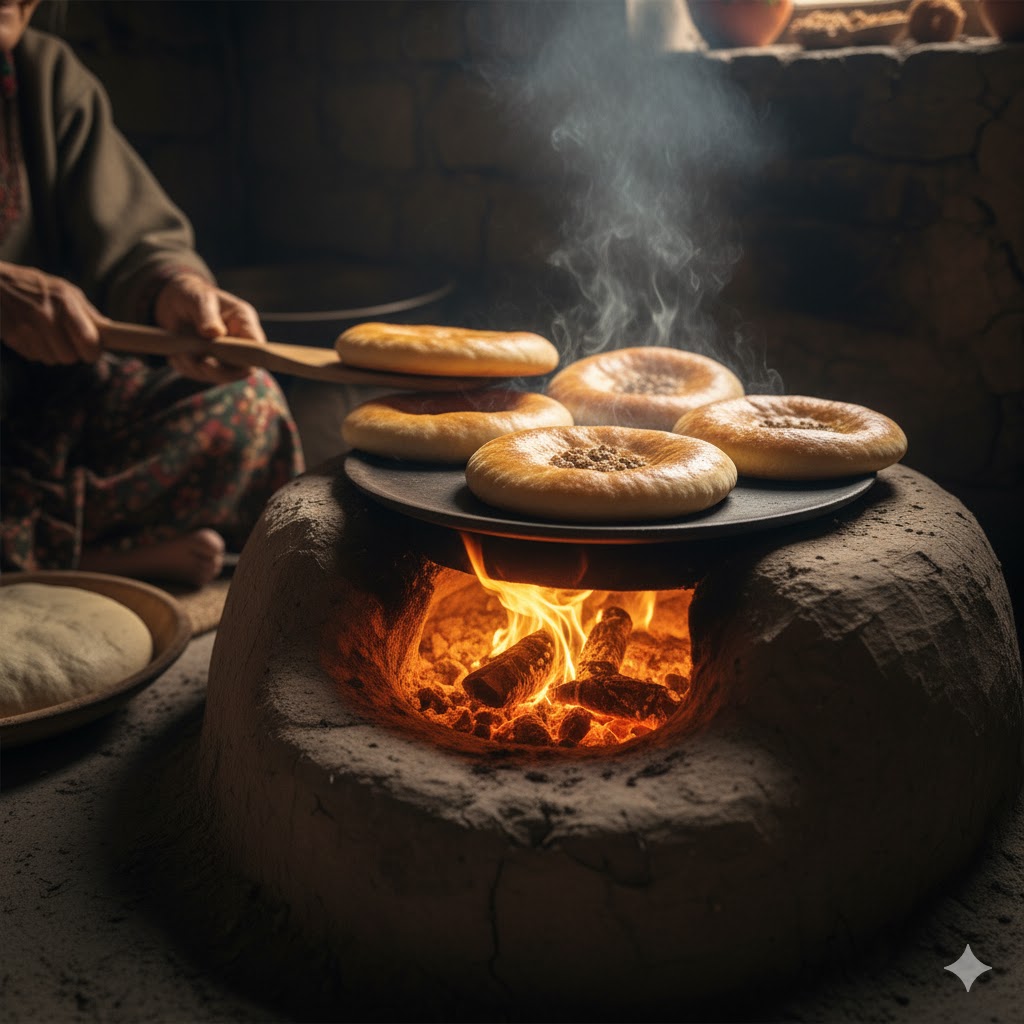
🏔️ The Human Side — Stories Behind the Stove
During interviews with locals, one story stood out.
In a small home near Khaplu, an 82-year-old woman named Bibi Rahmat shared:
“I’ve been making Balti Gosht for 60 years. When travelers come, I serve it with apricot oil — that’s how I bless their journey.”
Her words reflect how food transcends tourism — it’s a bridge between stranger and host, memory and identity.
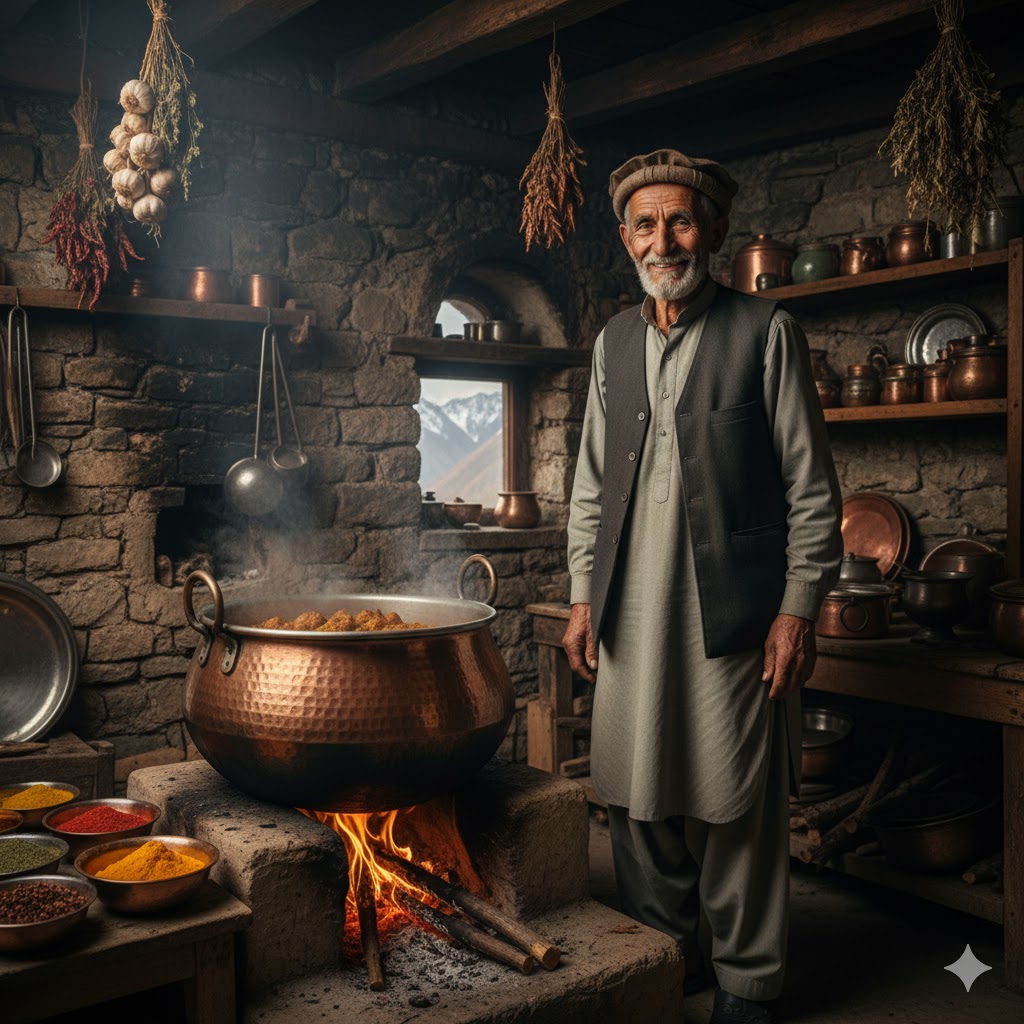
🌸 Food as Culture — The Rituals Around the Table
Eating in Northern Pakistan isn’t solitary. Meals are shared cross-legged on woven mats, served from a single dish — symbolizing unity.
Hospitality is sacred: refusing food is considered impolite.
In Hunza’s smaller villages like Altit, visitors are often invited to join evening tea circles, where tales of ancestors mix with laughter and songs. Each cup of tea is a story of belonging.
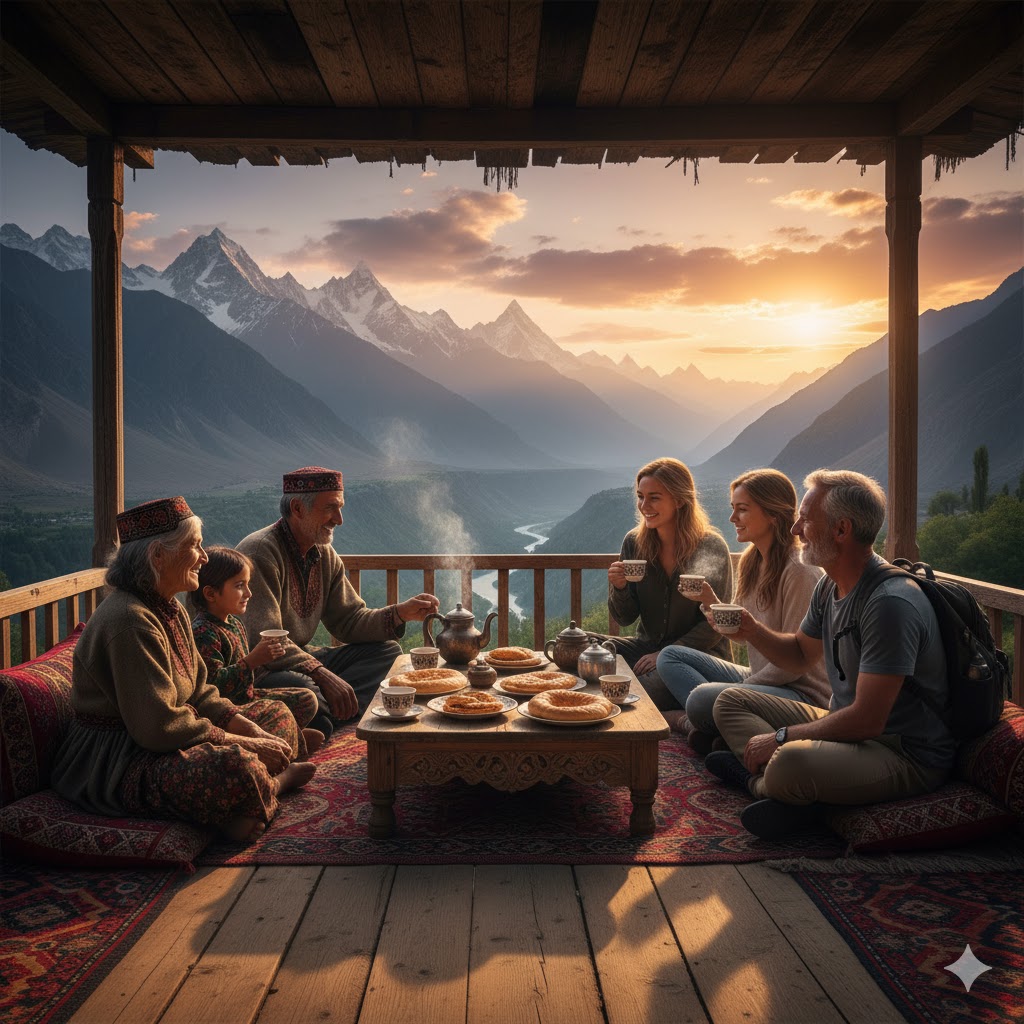
🍃 Flavors of Faith — The Spiritual Connection
Mountain food isn’t just nourishment — it’s spiritual.
Every ingredient has meaning: salt from sacred springs, grains blessed during sowing, and butter churned by hand as a form of meditation.
The Kalash people of Chitral consider cooking an offering — part of the same divine rhythm that guides their festivals and songs.
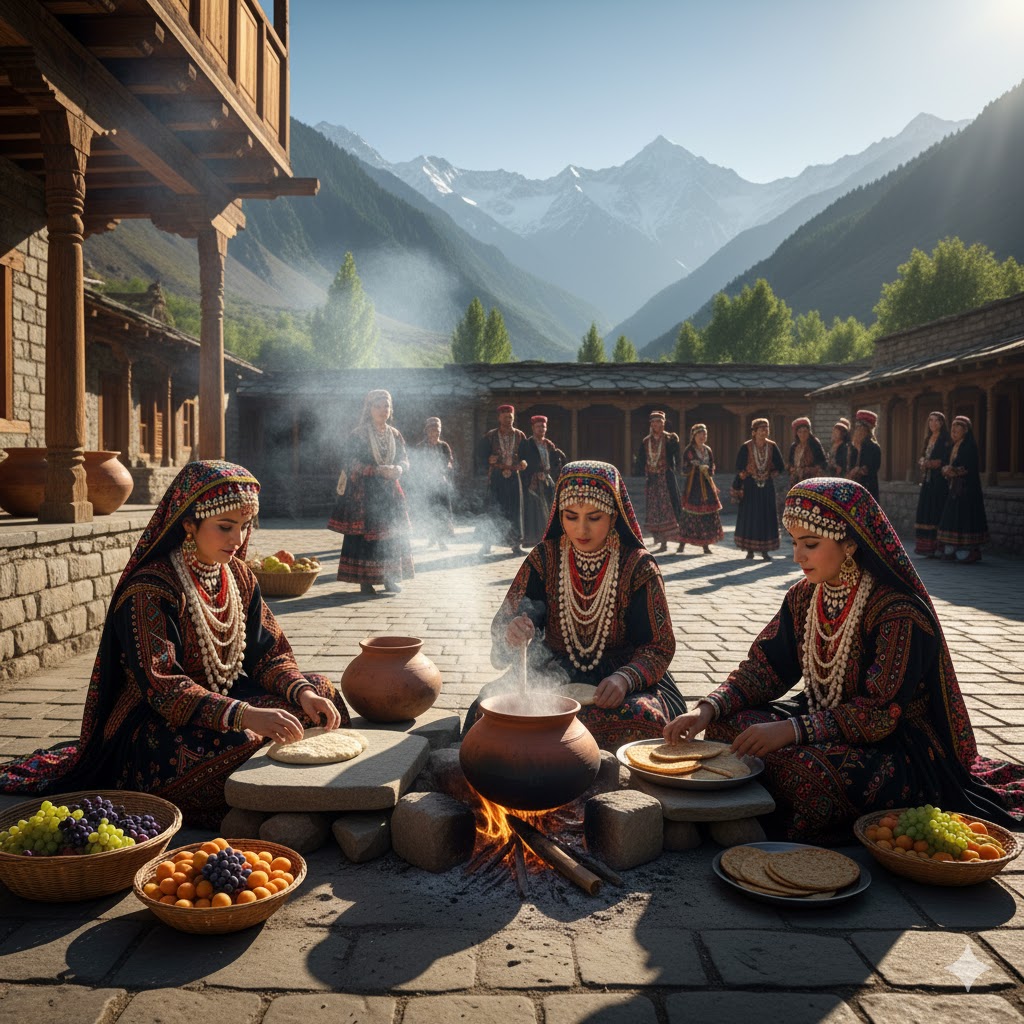
🧭 Culinary Trail Adventure — A 7-Day Food & Culture Itinerary
Day 1–2: Arrive in Gilgit → Try Chapshuro and Trout Curry
Day 3: Drive to Hunza → Join bread-baking session in Altit Fort Café
Day 4–5: Head to Skardu → Enjoy Balti Gosht and Gyal pancakes
Day 6: Visit Shigar → Eat with locals in traditional homes
Day 7: Return via Gilgit → Stop for Mamtu dumplings
Local experts recommend April–October as the best time for culinary exploration — after winter thaws but before heavy snow returns.
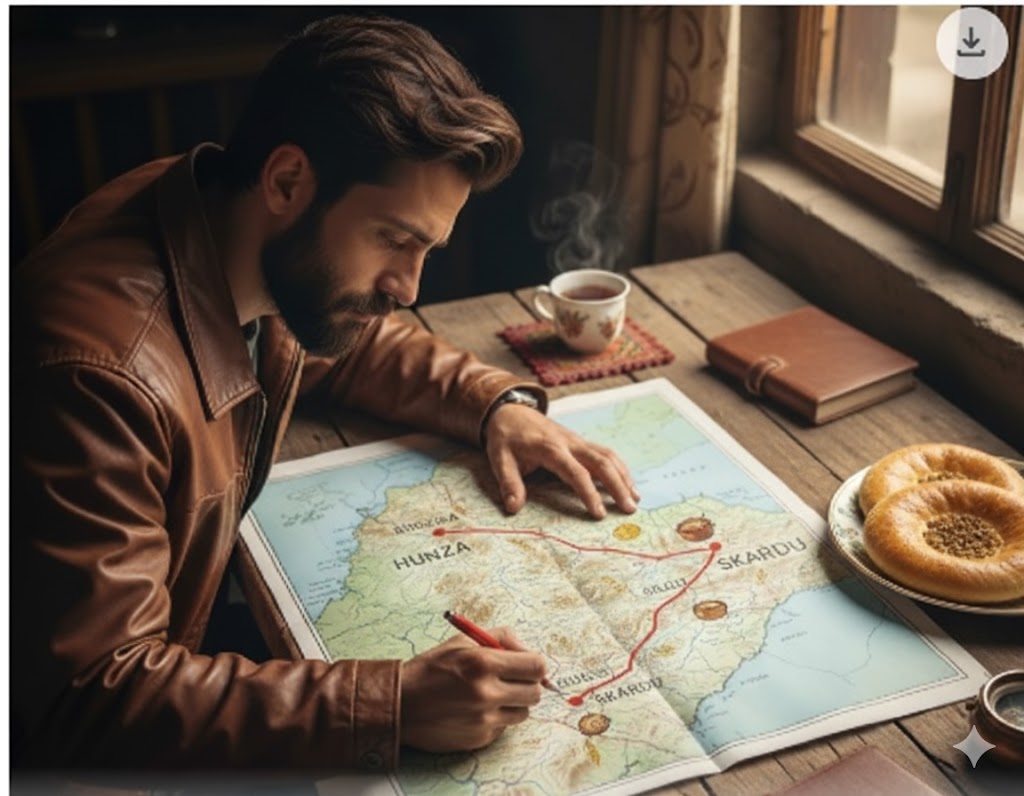
🏡 Accommodation with Authentic Kitchens
Staying in local-run lodges lets travelers experience real mountain food.
Here are some highly rated stays known for culinary hospitality:
- Hunza Serena Inn (Hunza): Offers “Apricot Breakfast” buffet.
- Shigar Fort Residence (Skardu): Serves dinner under apricot trees.
- Kalash HomeStay (Bumburet): Teaches guests local recipes.
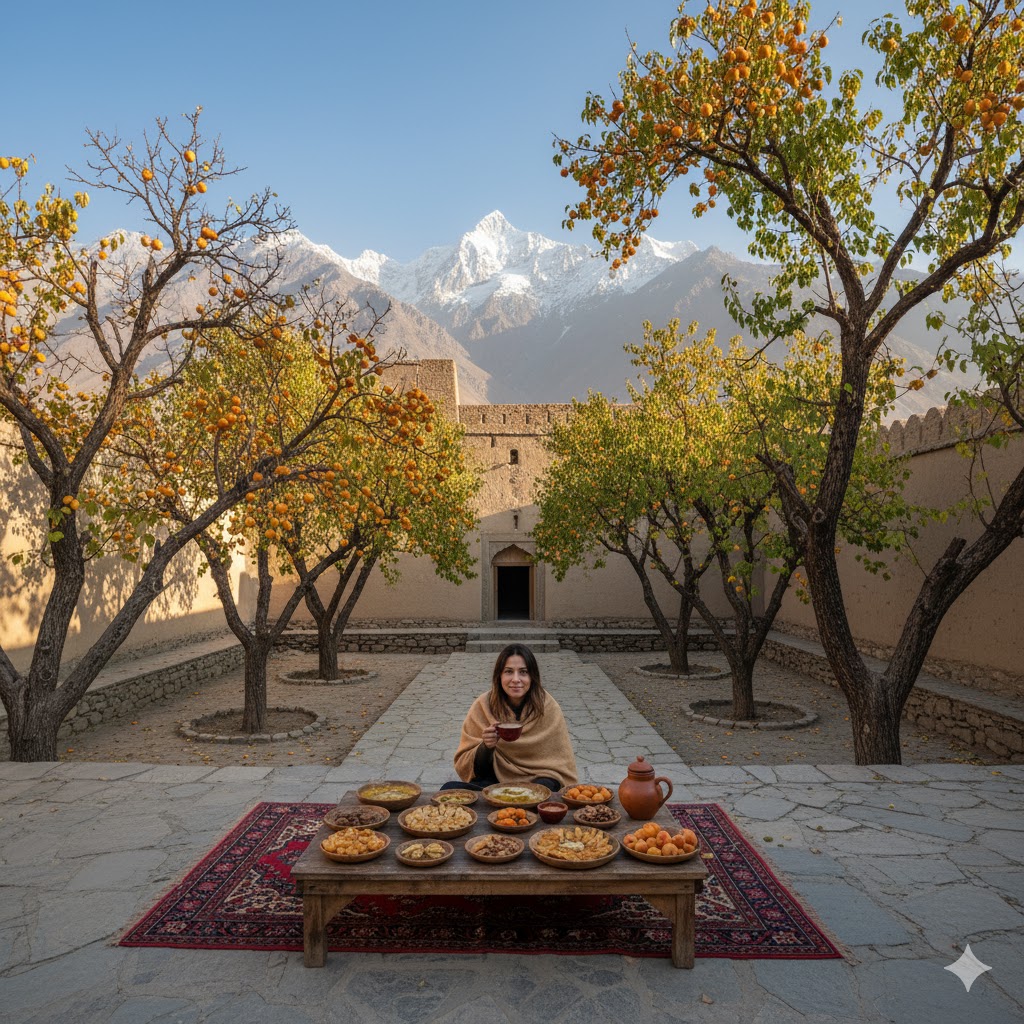
🍯 Culinary Souvenirs to Bring Back
Northern Pakistan’s edible souvenirs are small, aromatic, and handmade:
- Apricot oil bottles (used in salads & skincare)
- Wild honey jars from Nagar Valley
- Dried walnuts & almonds sealed in cloth bags
- Handmade copper spice boxes
These are more than items — they’re tokens of connection, reminding travelers that food carries memory.

❄️ Winter Flavors — The Taste of Silence
When snow falls, kitchens shrink to fire-lit rooms. Food turns simpler — butter tea, barley soup, dried cheese, and fruit preserved from summer.
It’s a season of reflection where silence becomes an ingredient.
Locals say, “Winter food teaches patience.”
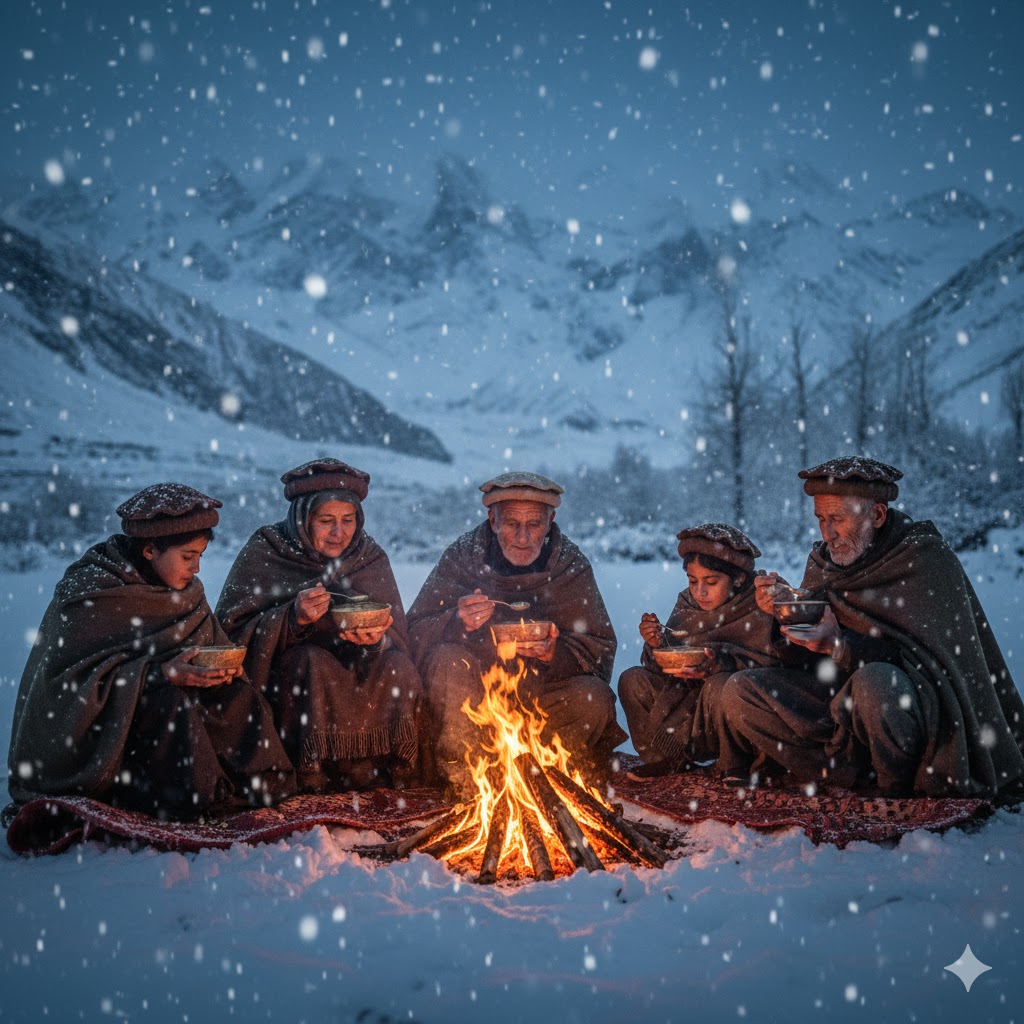
🕰️ Conclusion — Where Taste Meets Time
The Culinary Trails of Northern Pakistan (2026 Edition) remind us that heritage doesn’t always live in monuments — sometimes, it simmers in a pot, shared with strangers who become family.
From apricot orchards to mountain teahouses, every recipe whispers a truth:
“You don’t need luxury to taste paradise — just warmth, humility, and a spoon.”

FAQs — Culinary Trails of Northern Pakistan (2026 Edition)
- What is the focus of Northern Pakistan’s culinary culture?
It’s built on sustainability, simplicity, and the use of local ingredients like apricot oil, yak milk, and barley. - Which valley is best for food tourism?
Hunza Valley is the most popular, but Skardu and Chitral offer more authentic home-cooked experiences. - Is local food spicy?
Generally mild — the northern palate prefers light seasoning with salt, yogurt, and herbs. - Do I need a guide for culinary trails?
Not always, but hiring a local helps with language and home-cooking experiences. - What are the top dishes travelers must try?
Chapshuro, Dowdo, Mamtu, Balti Gosht, and Gyal pancakes. - Are there vegetarian options?
Yes, apricot curries, lentil soups, and wild spinach dishes are common. - What’s the best season for food exploration?
Spring (March–May) and autumn (September–October) are ideal for accessibility and festivals. - Can tourists participate in cooking?
Yes, most homestays offer participatory cooking sessions and cultural dinners. - Is mountain water safe for drinking?
Generally yes, but always use filtered or boiled water during treks. - What makes Northern Pakistan’s food unique?
It’s the connection between people and nature — pure, unprocessed, and spiritually grounded.


